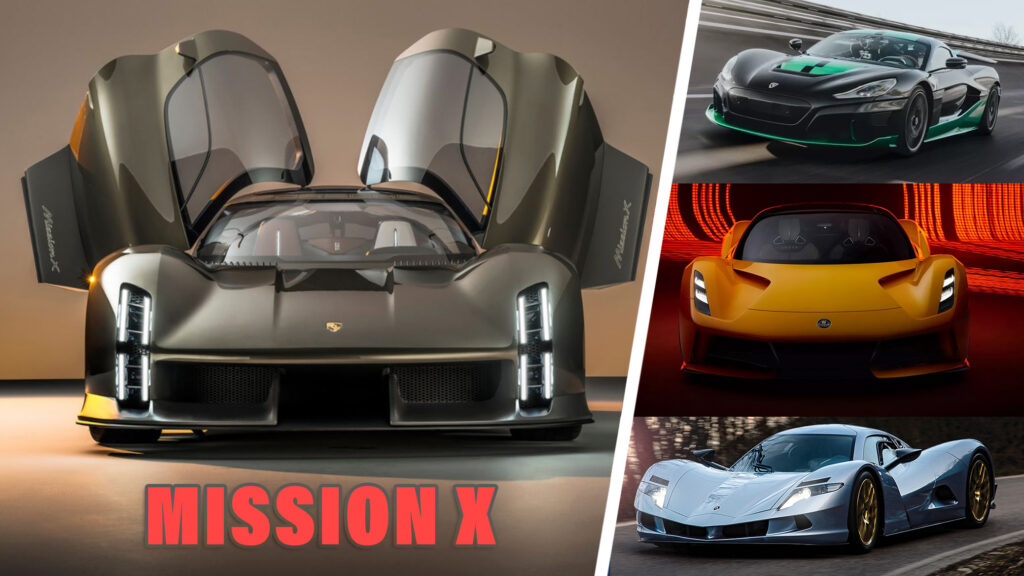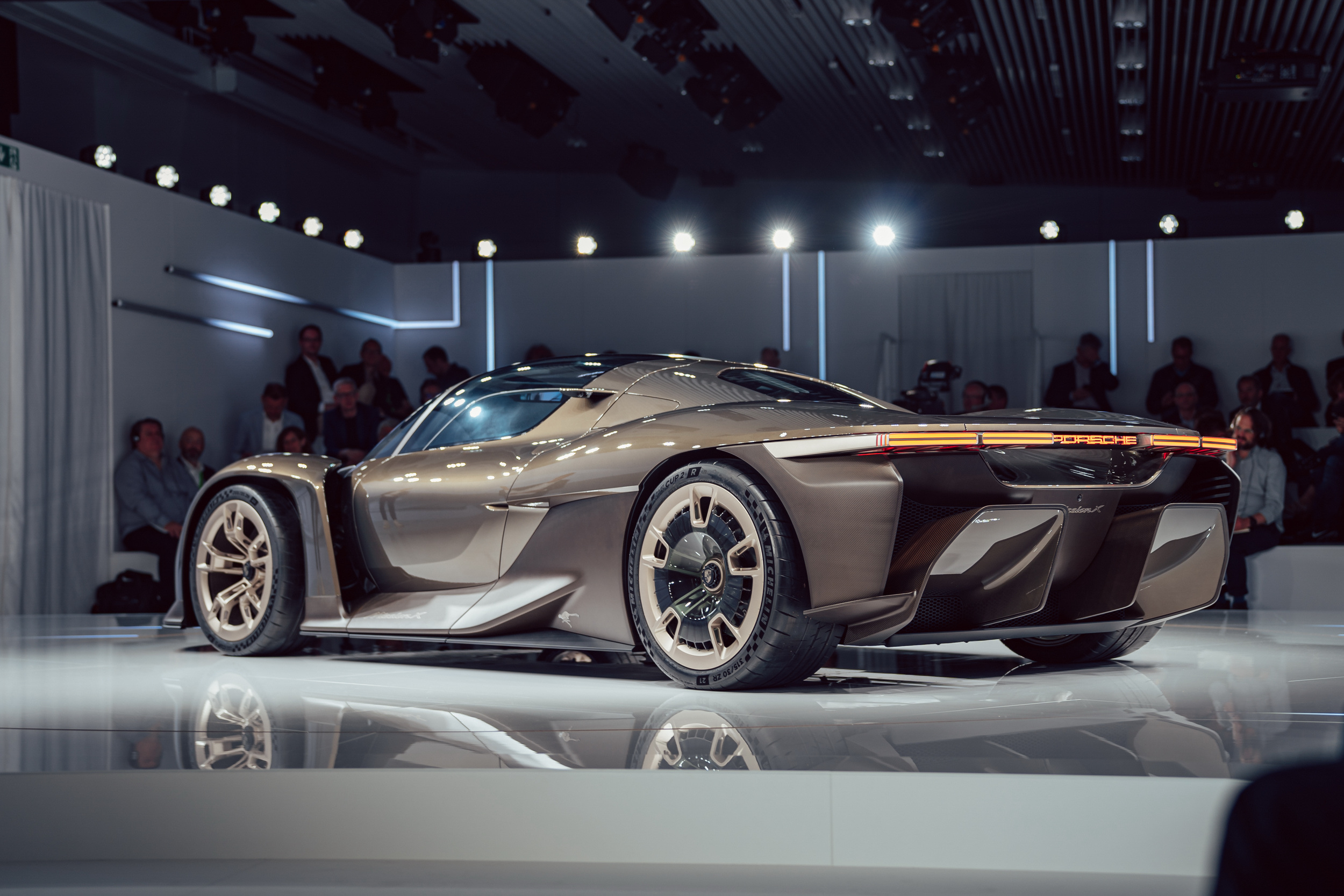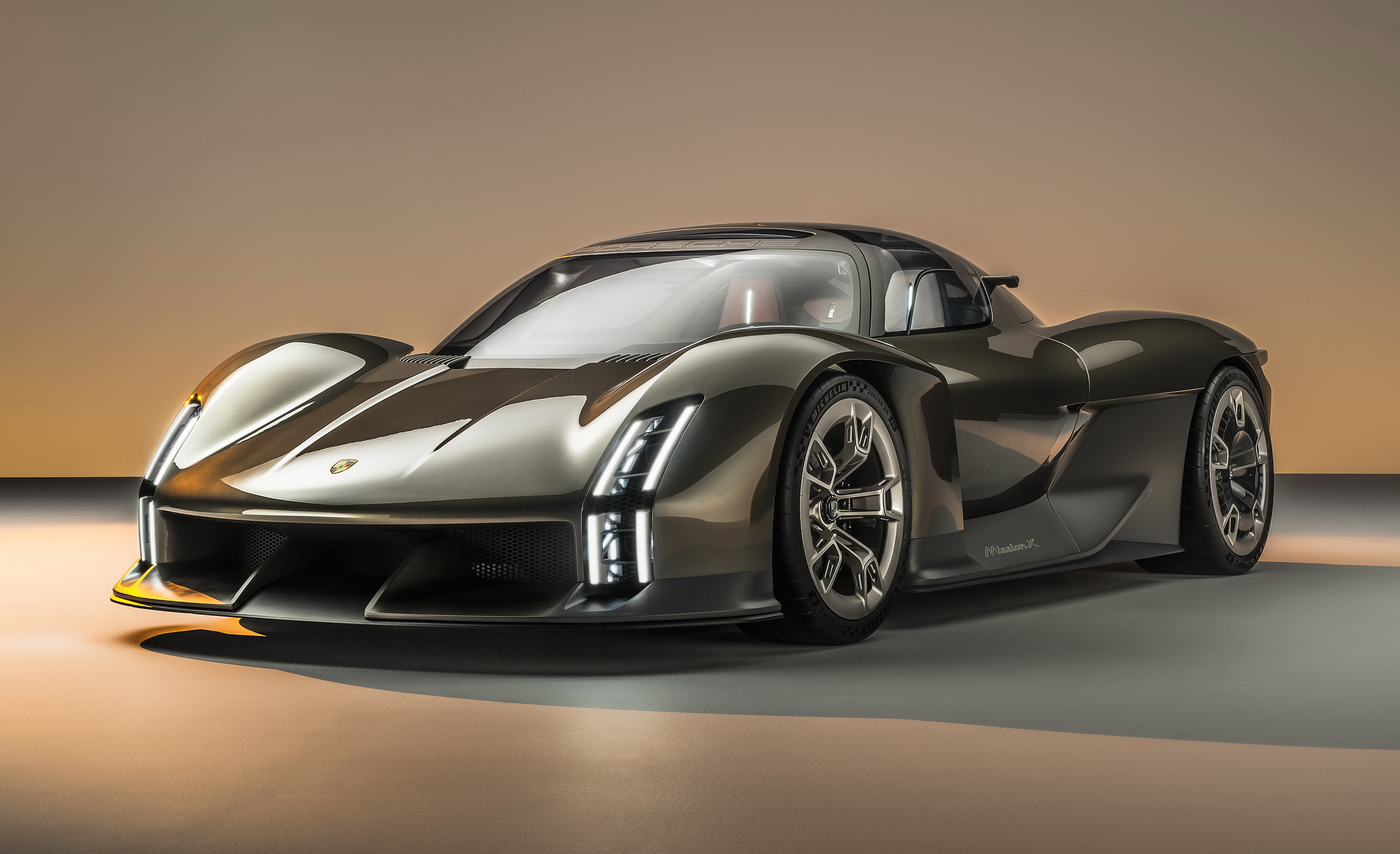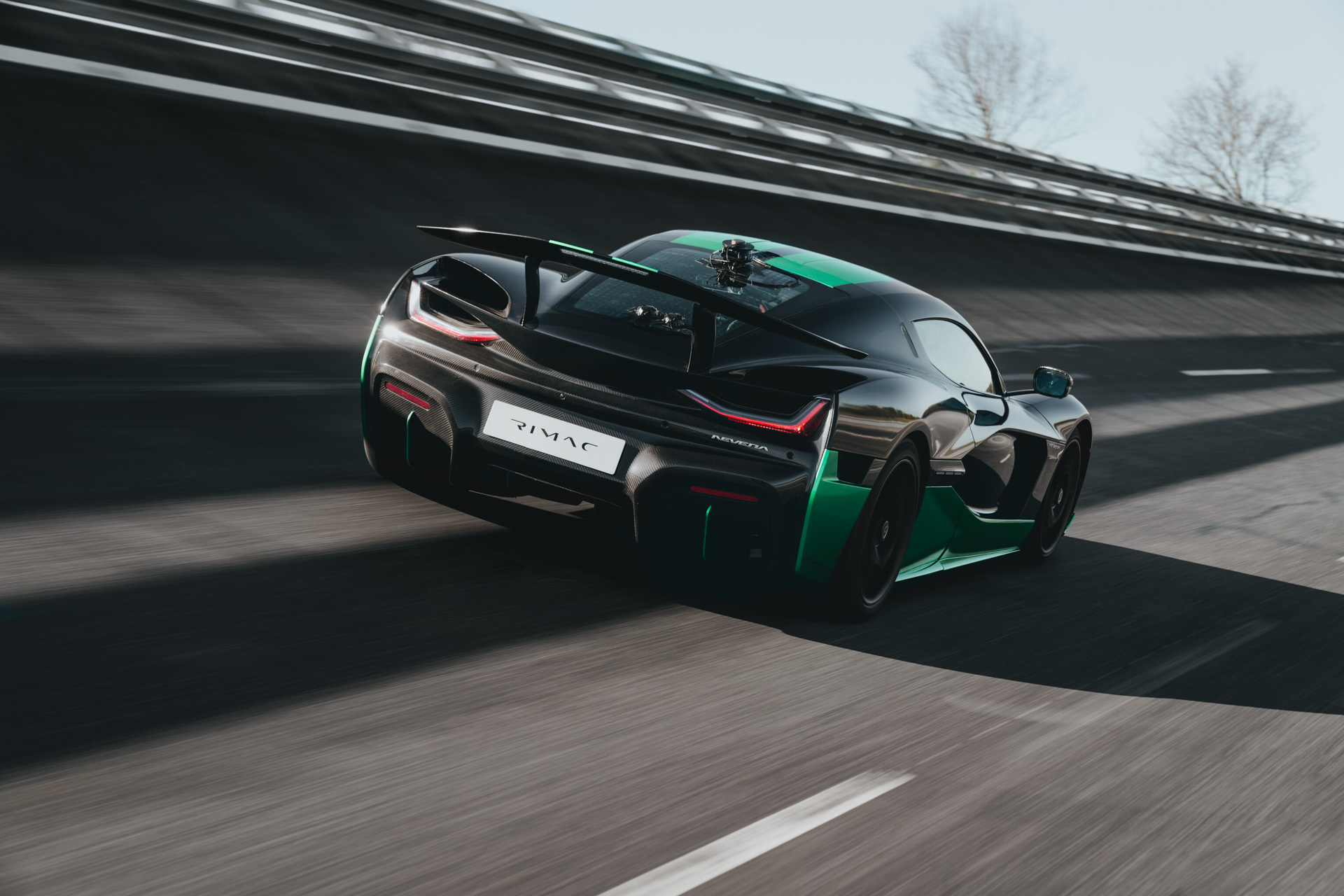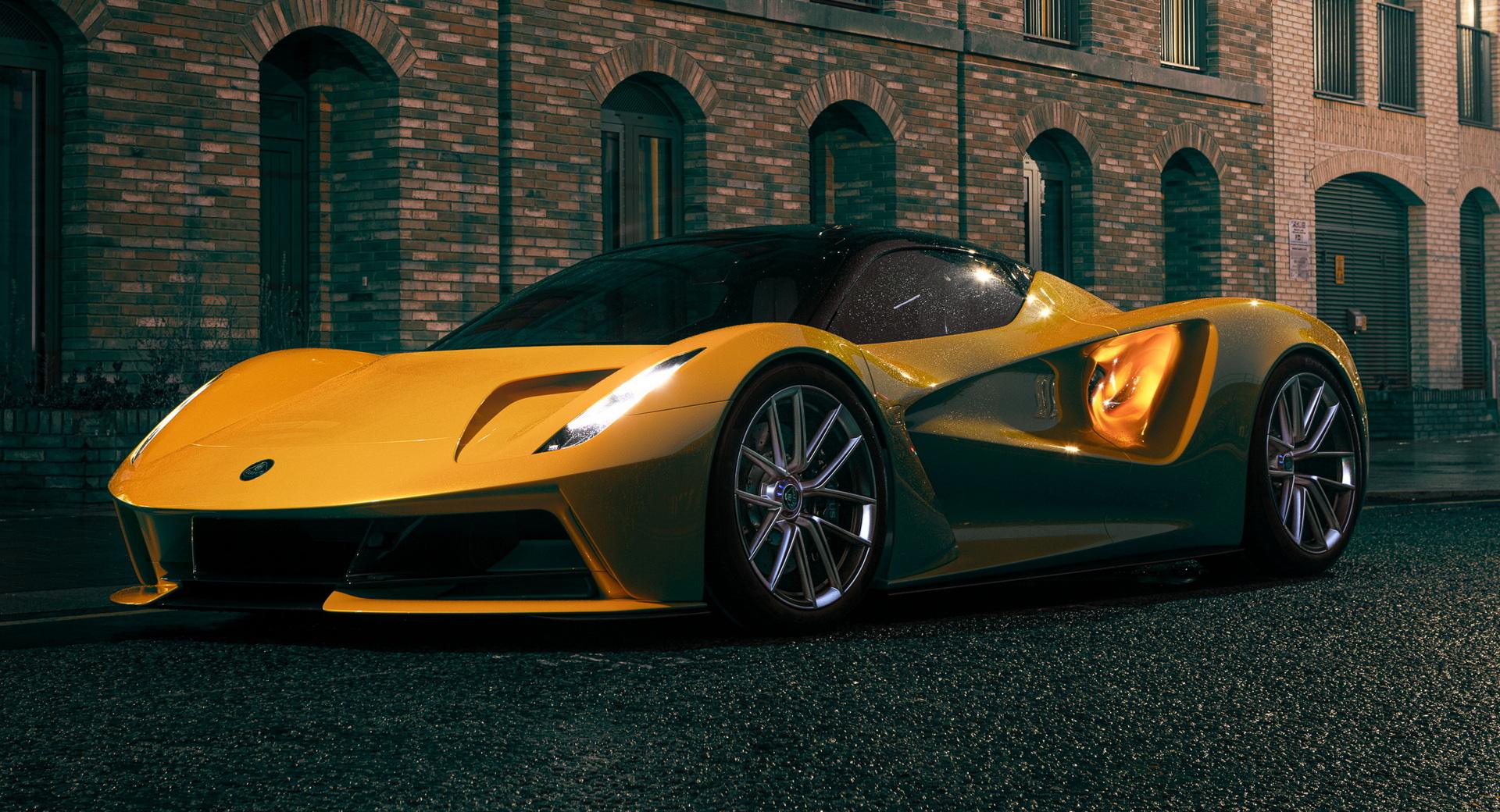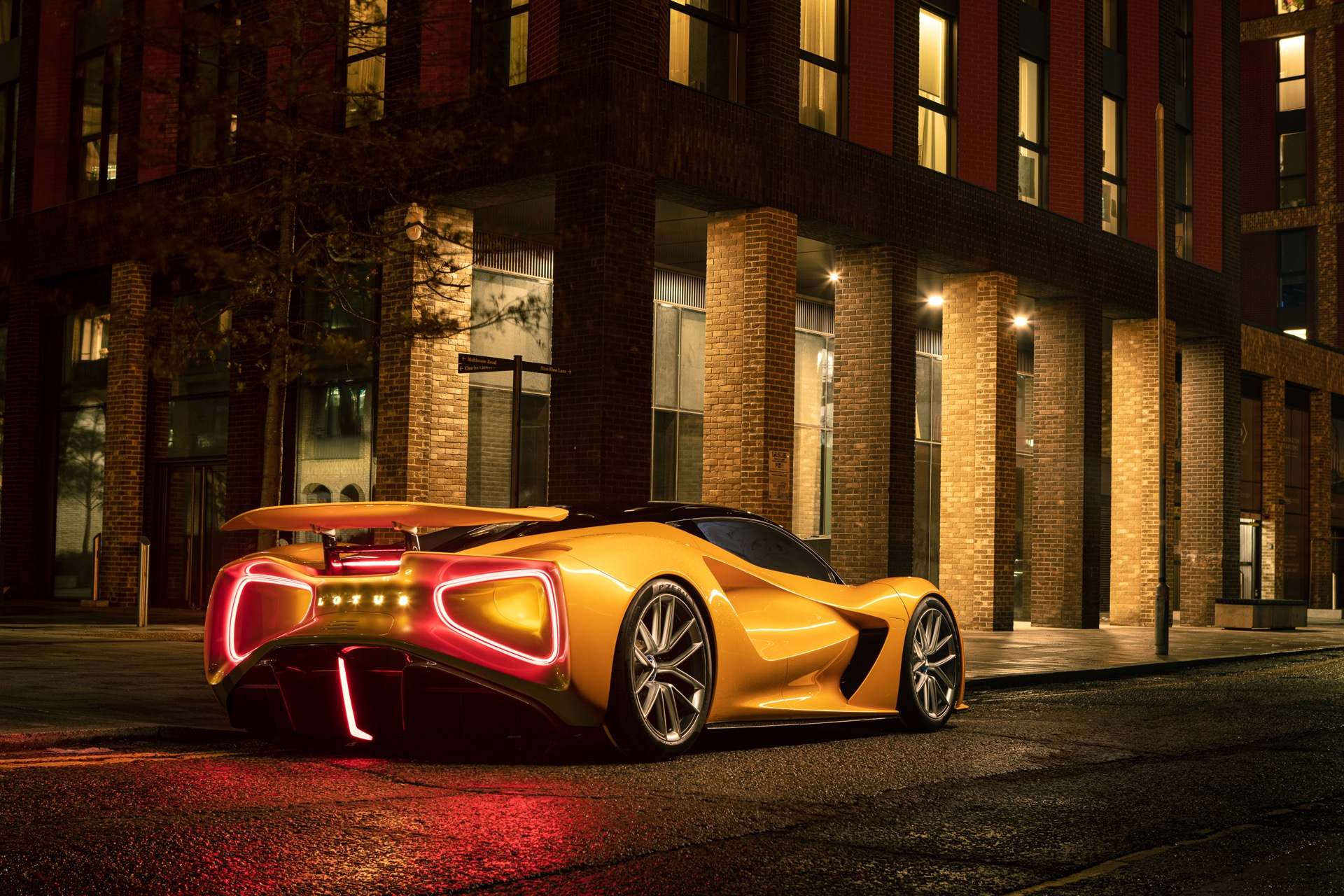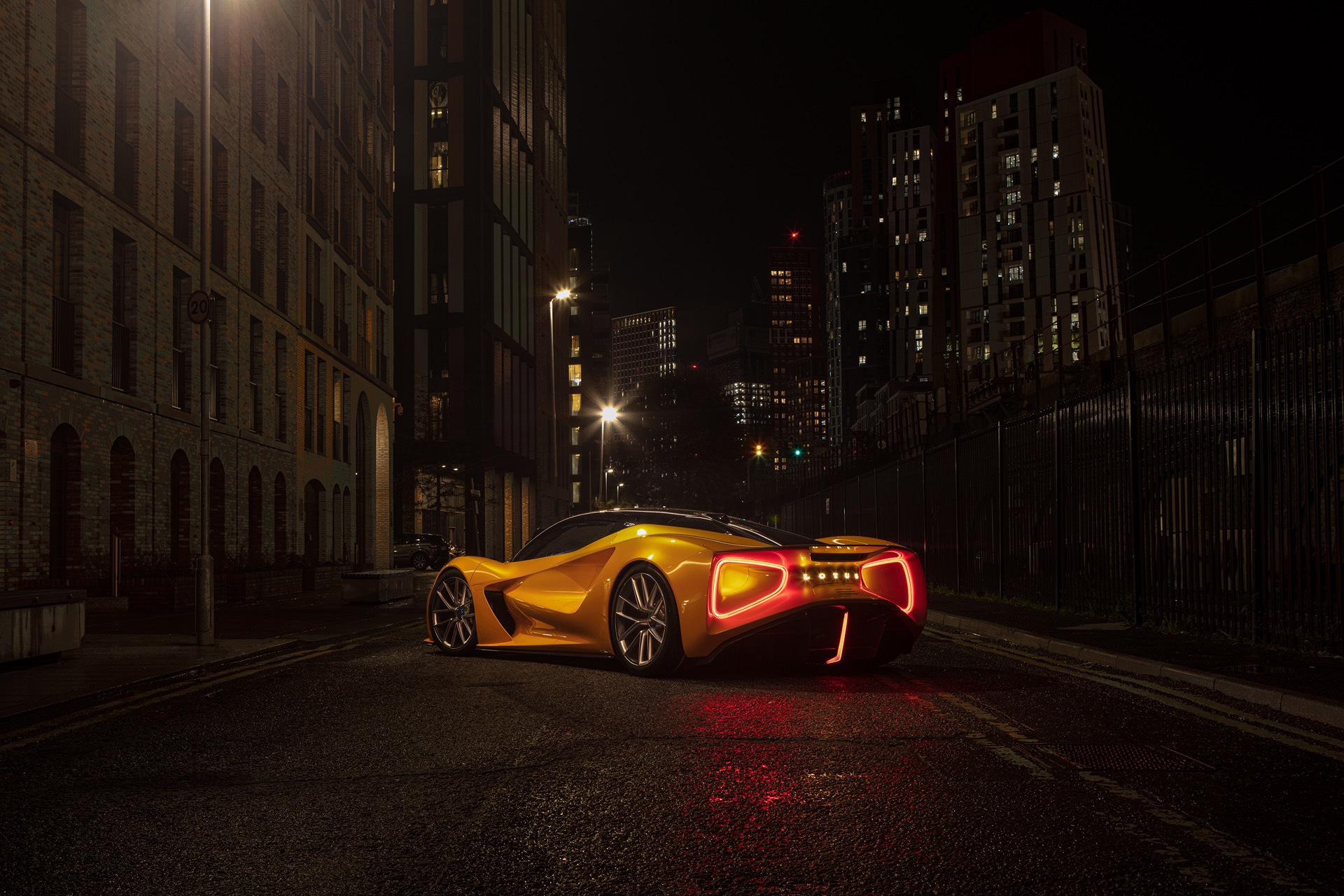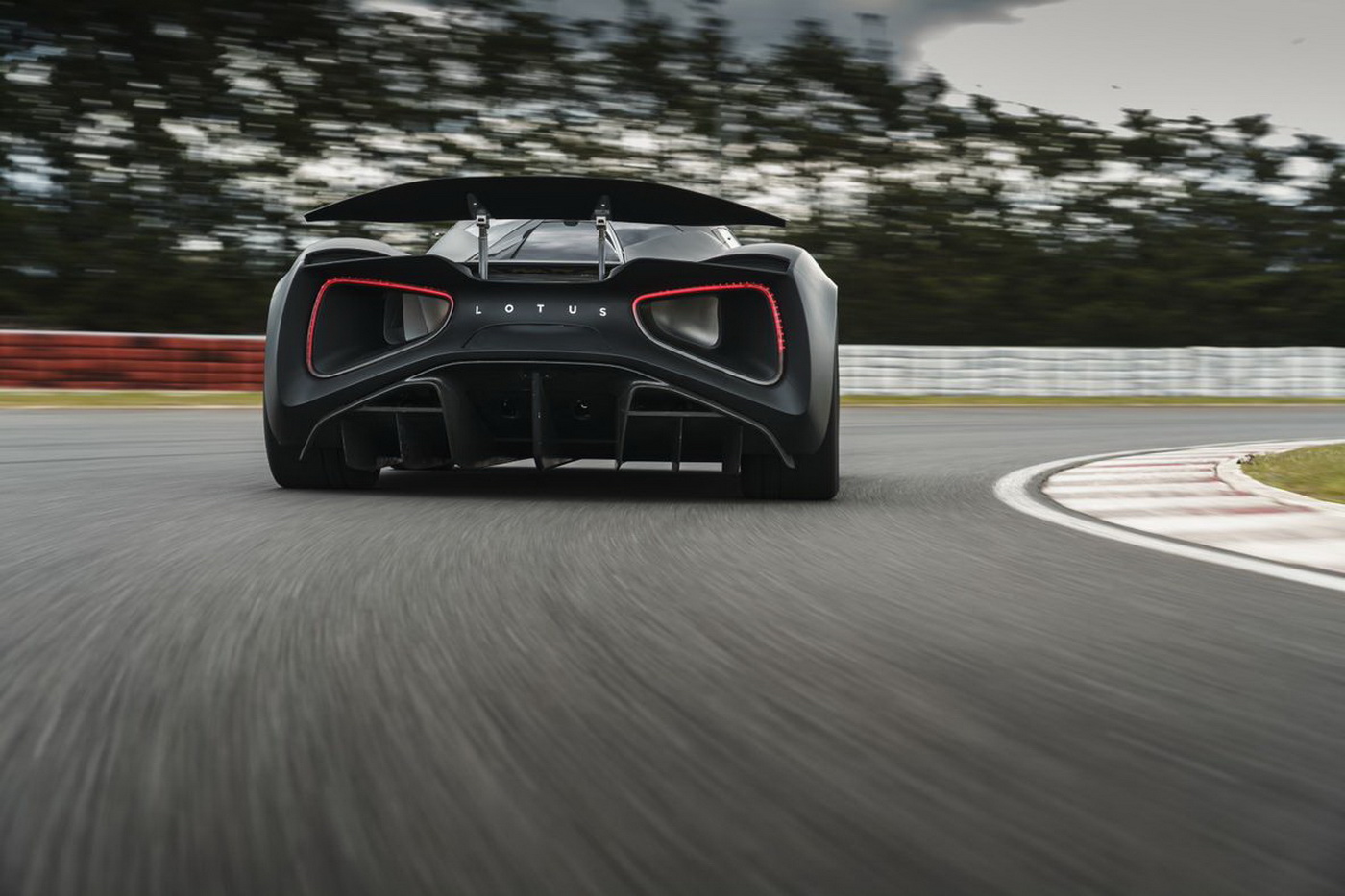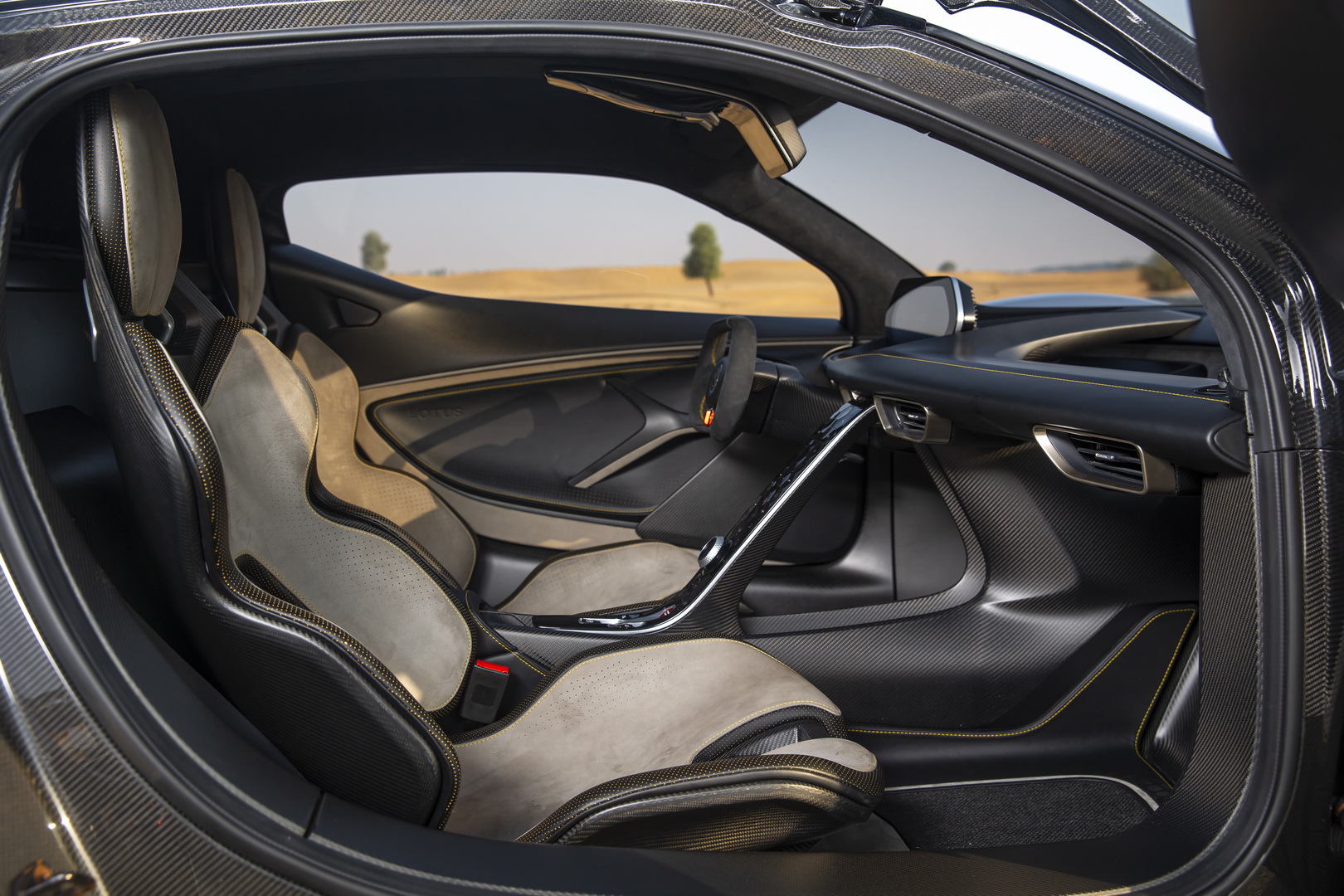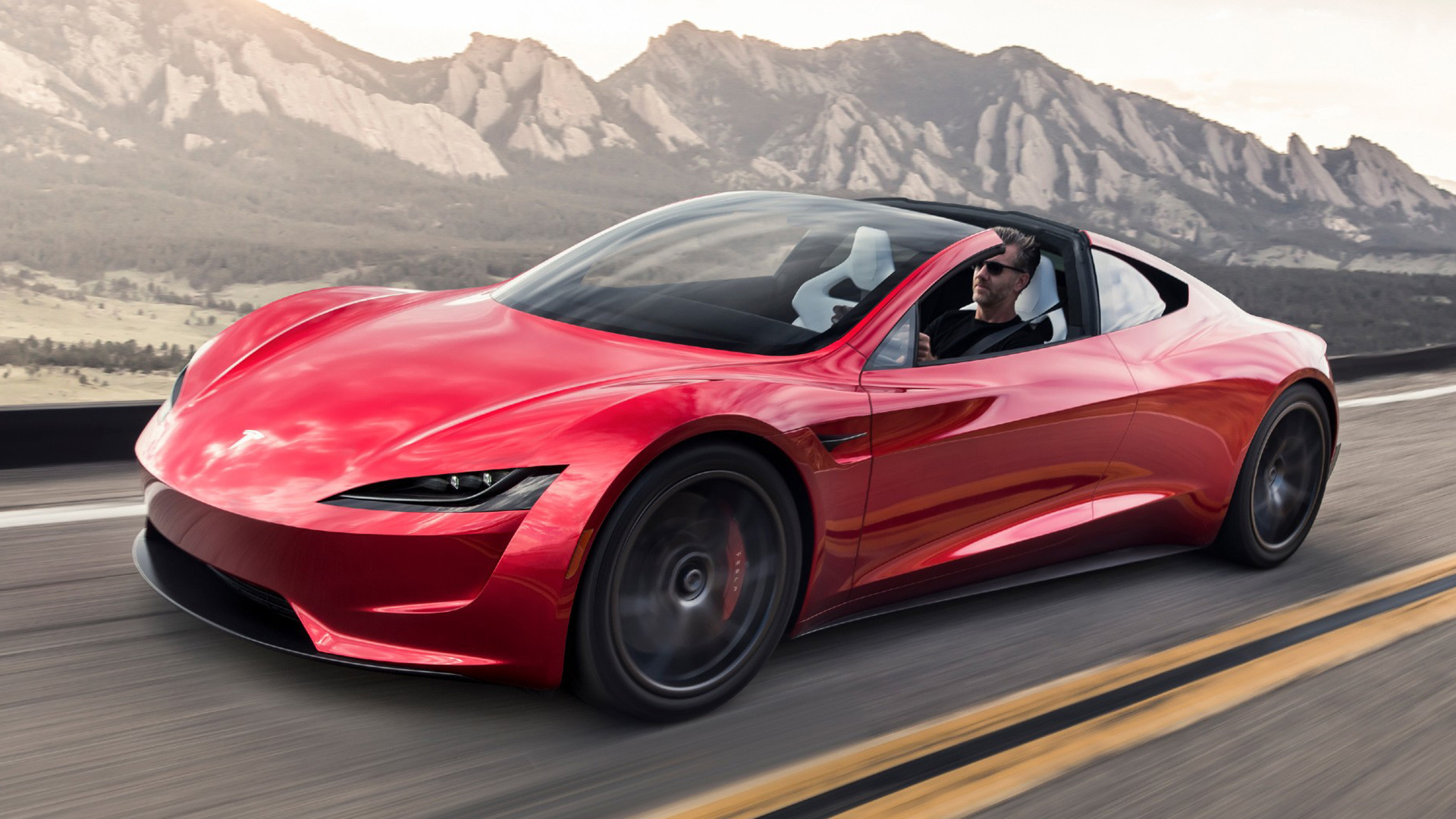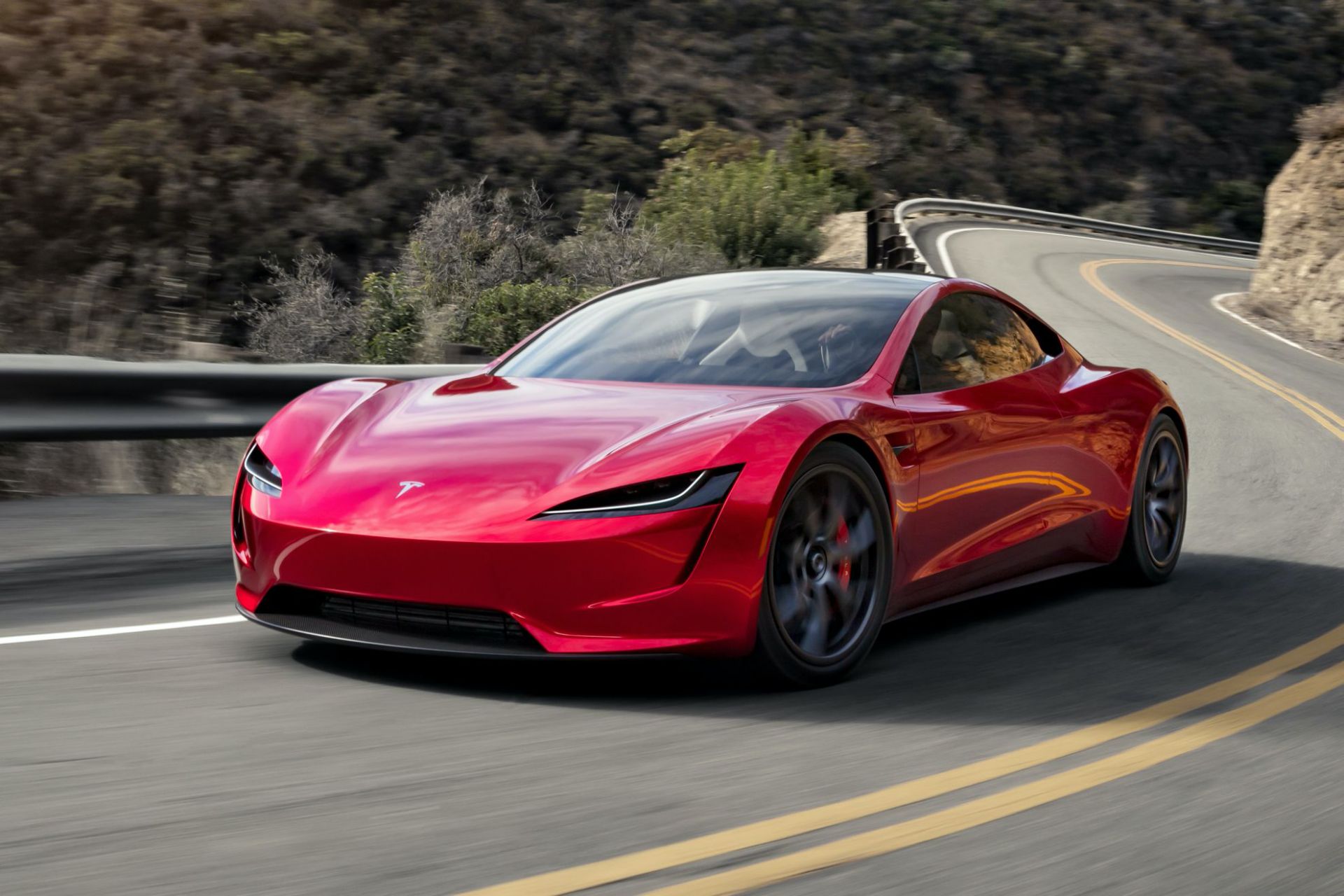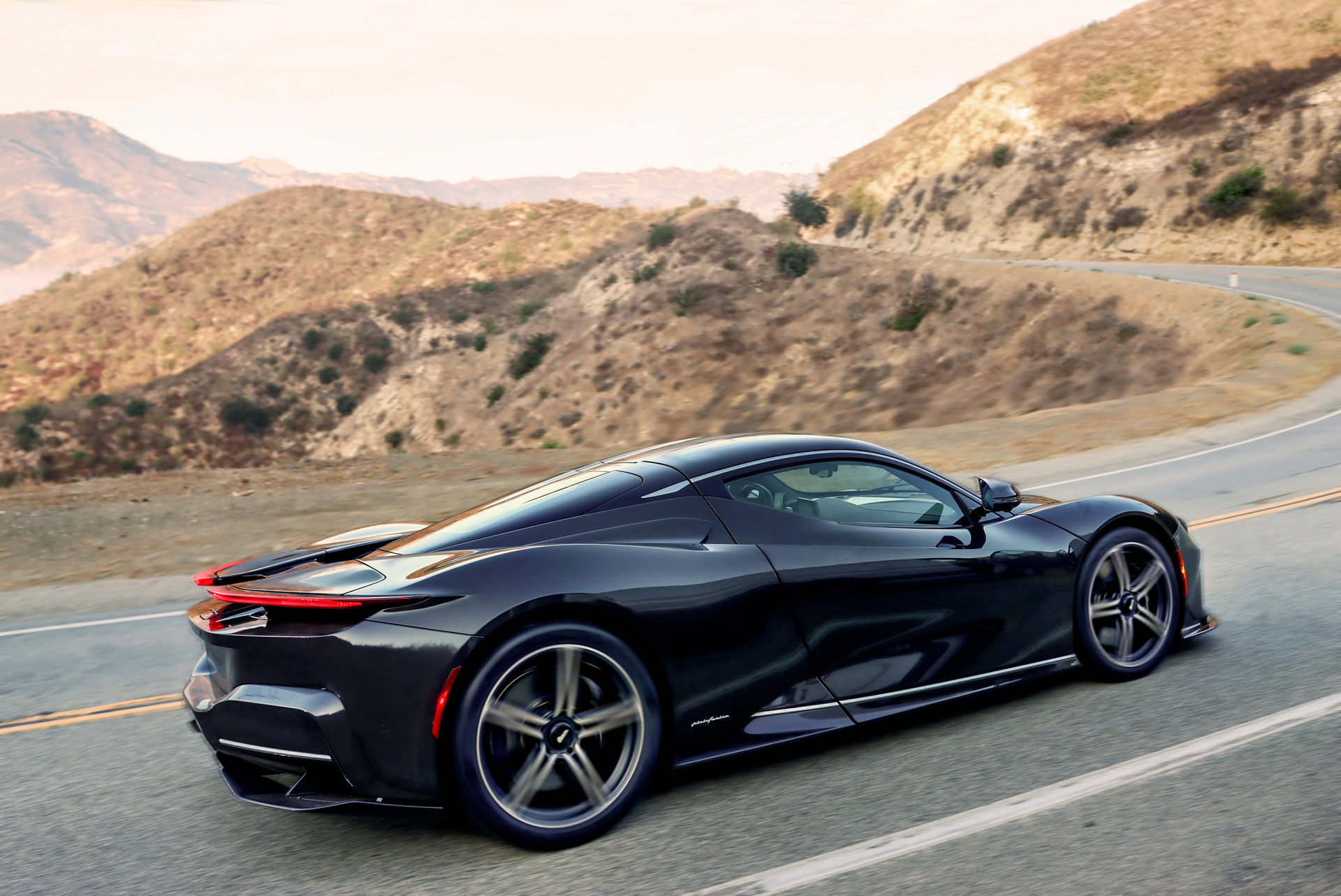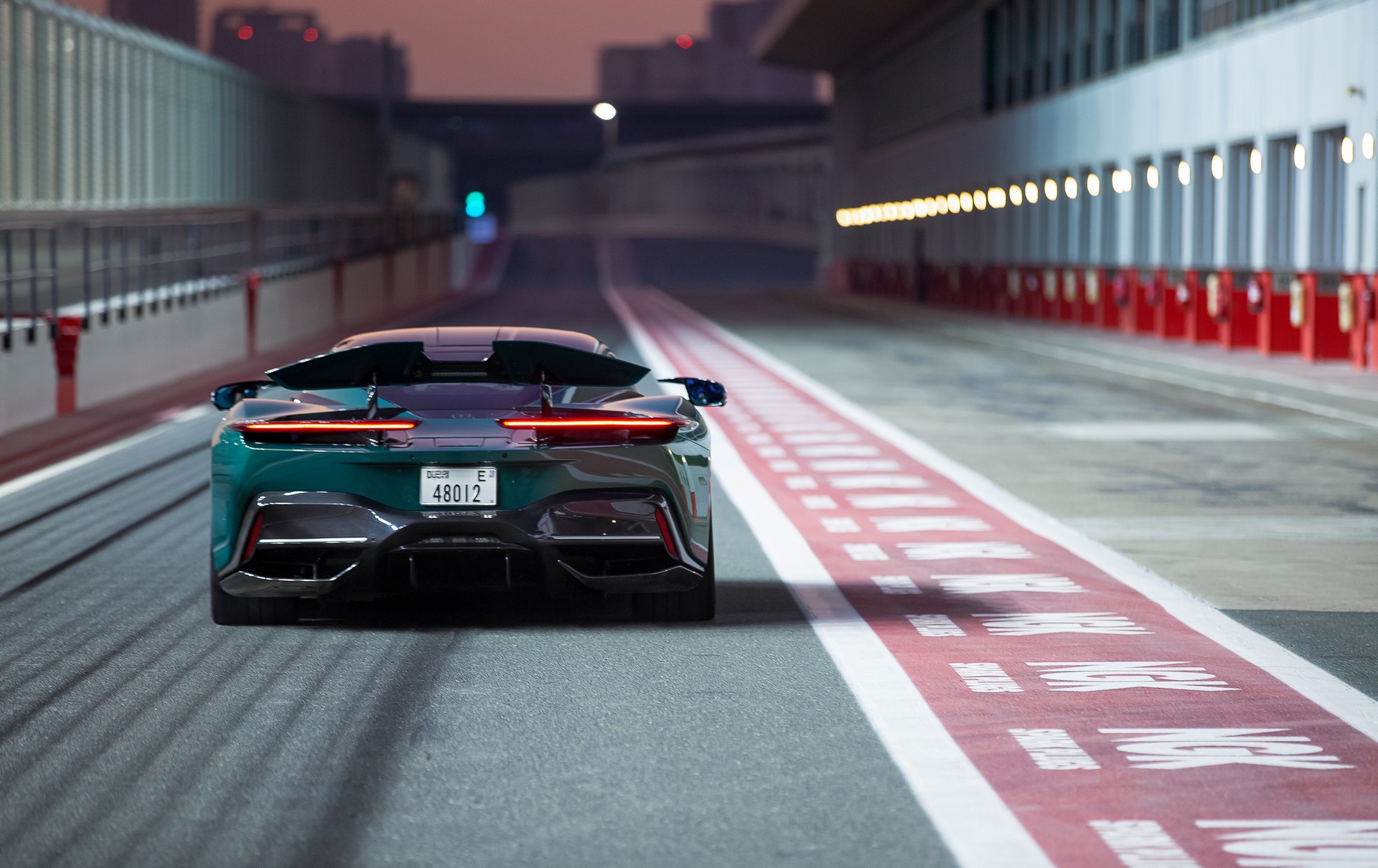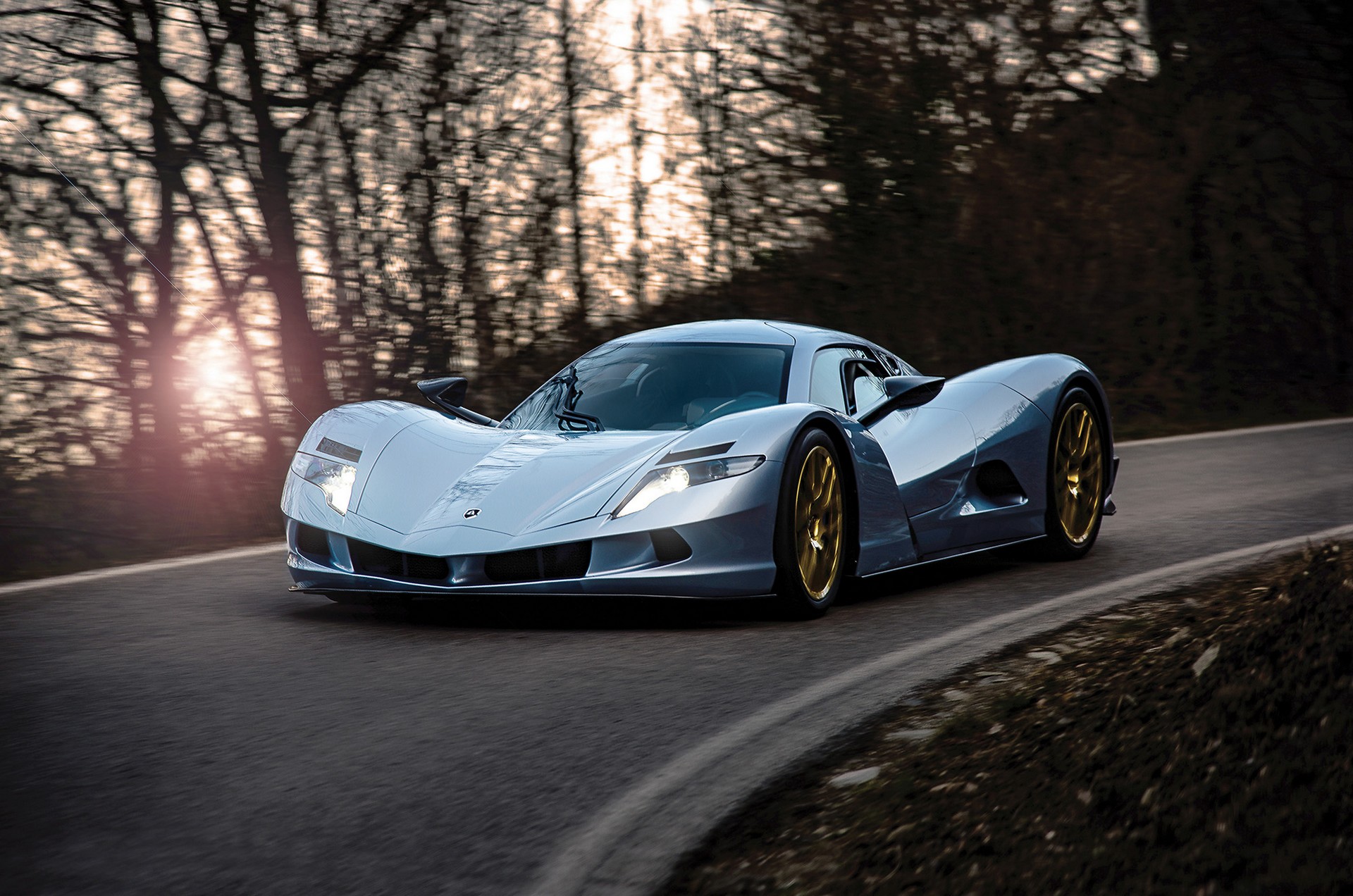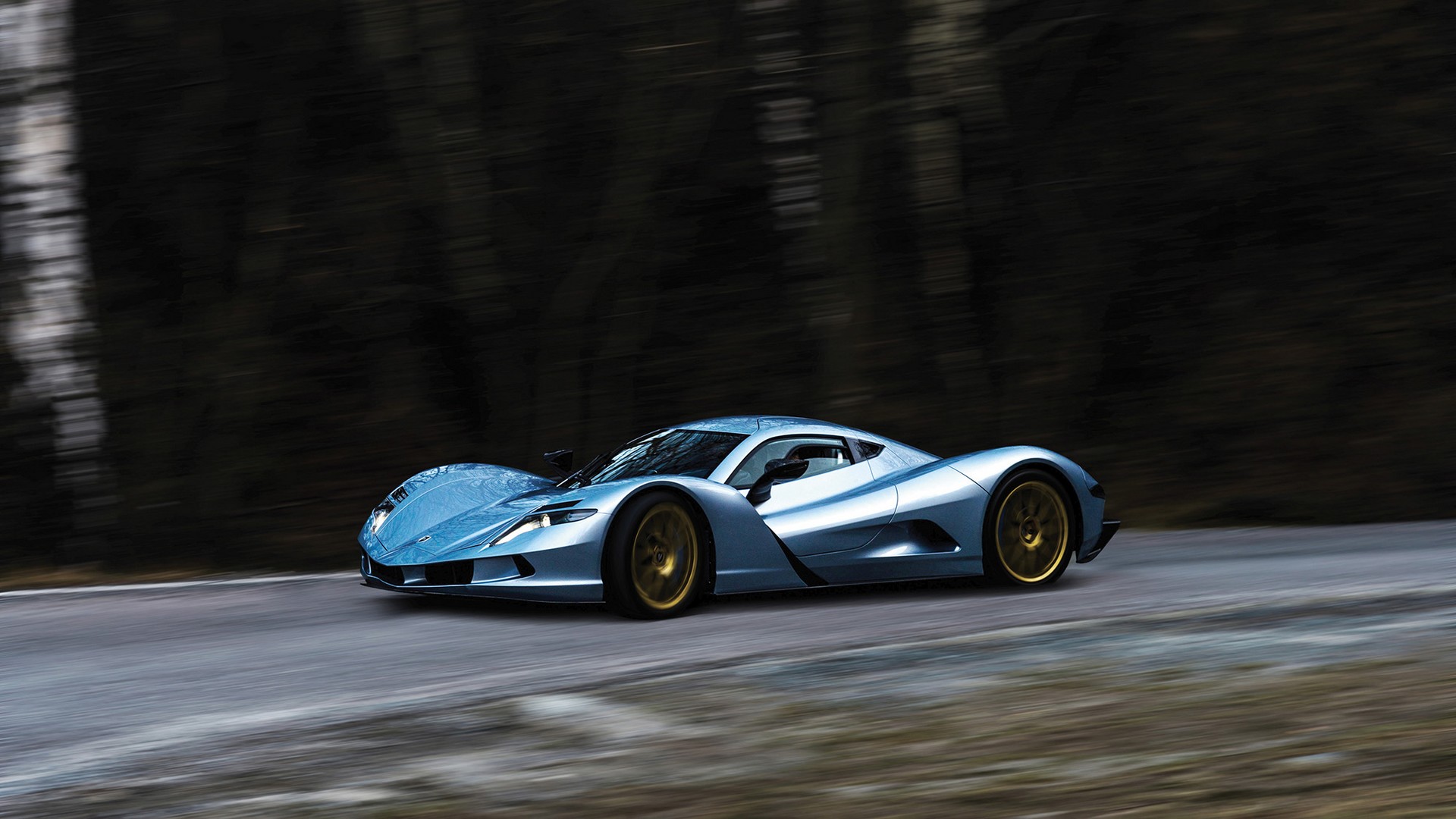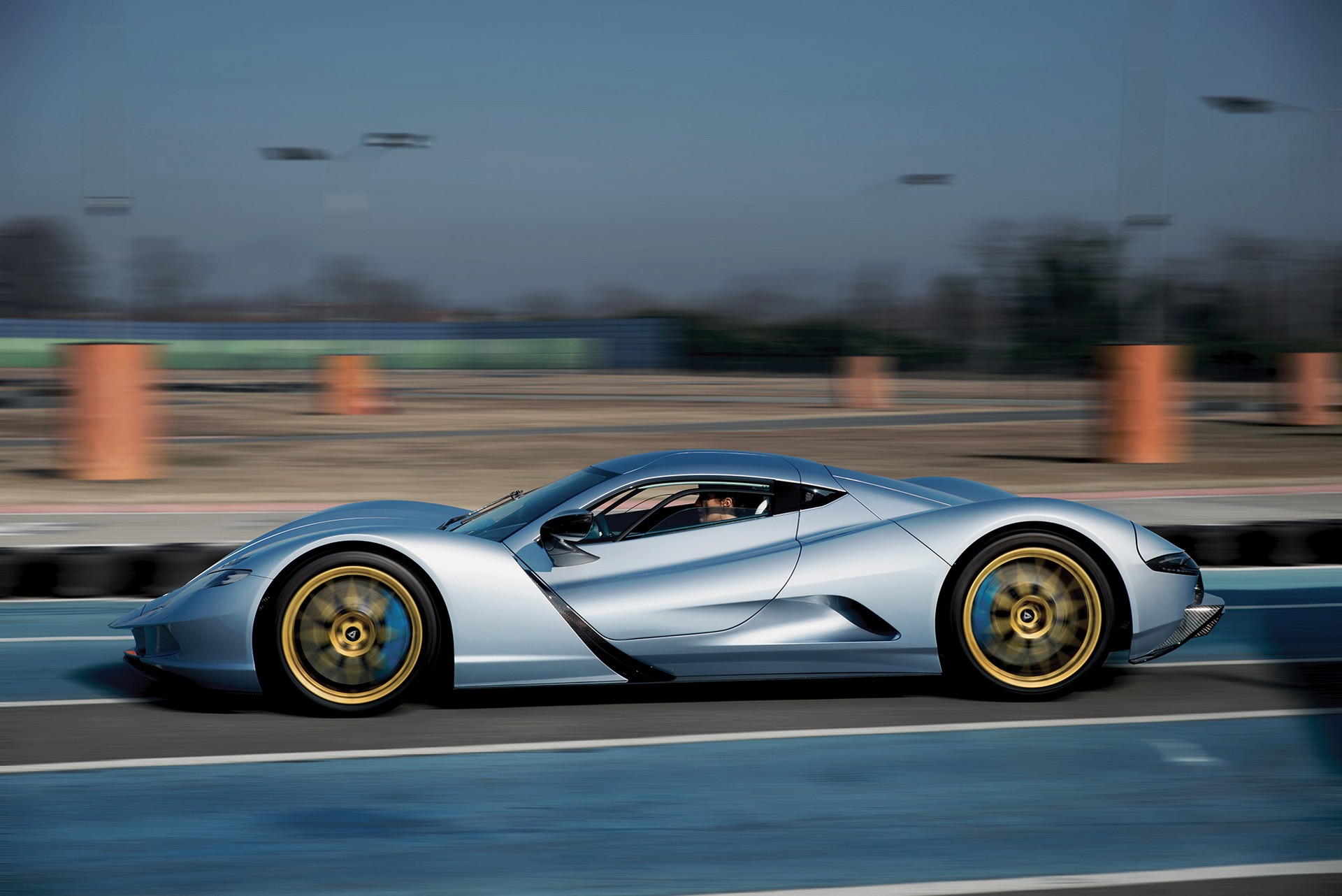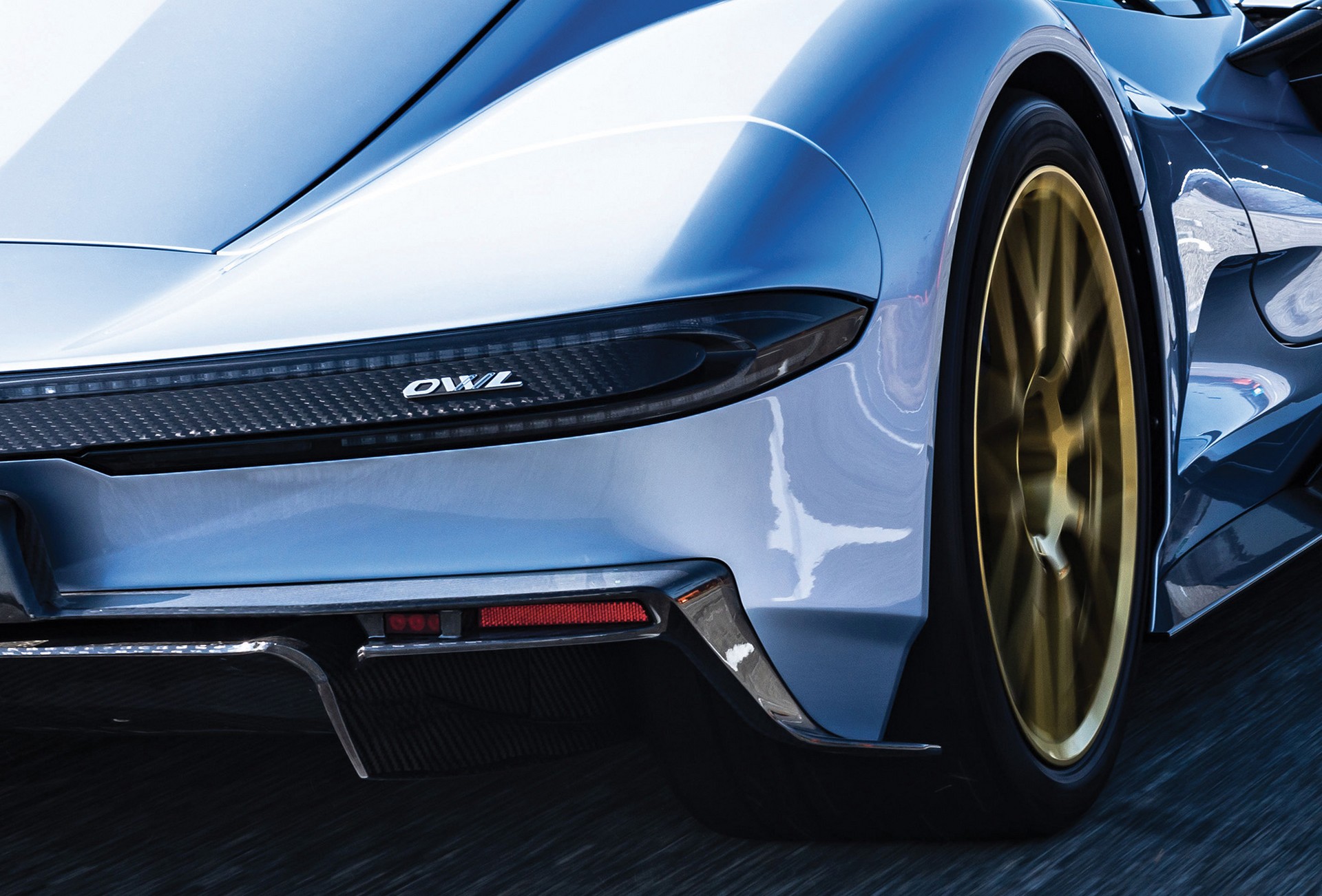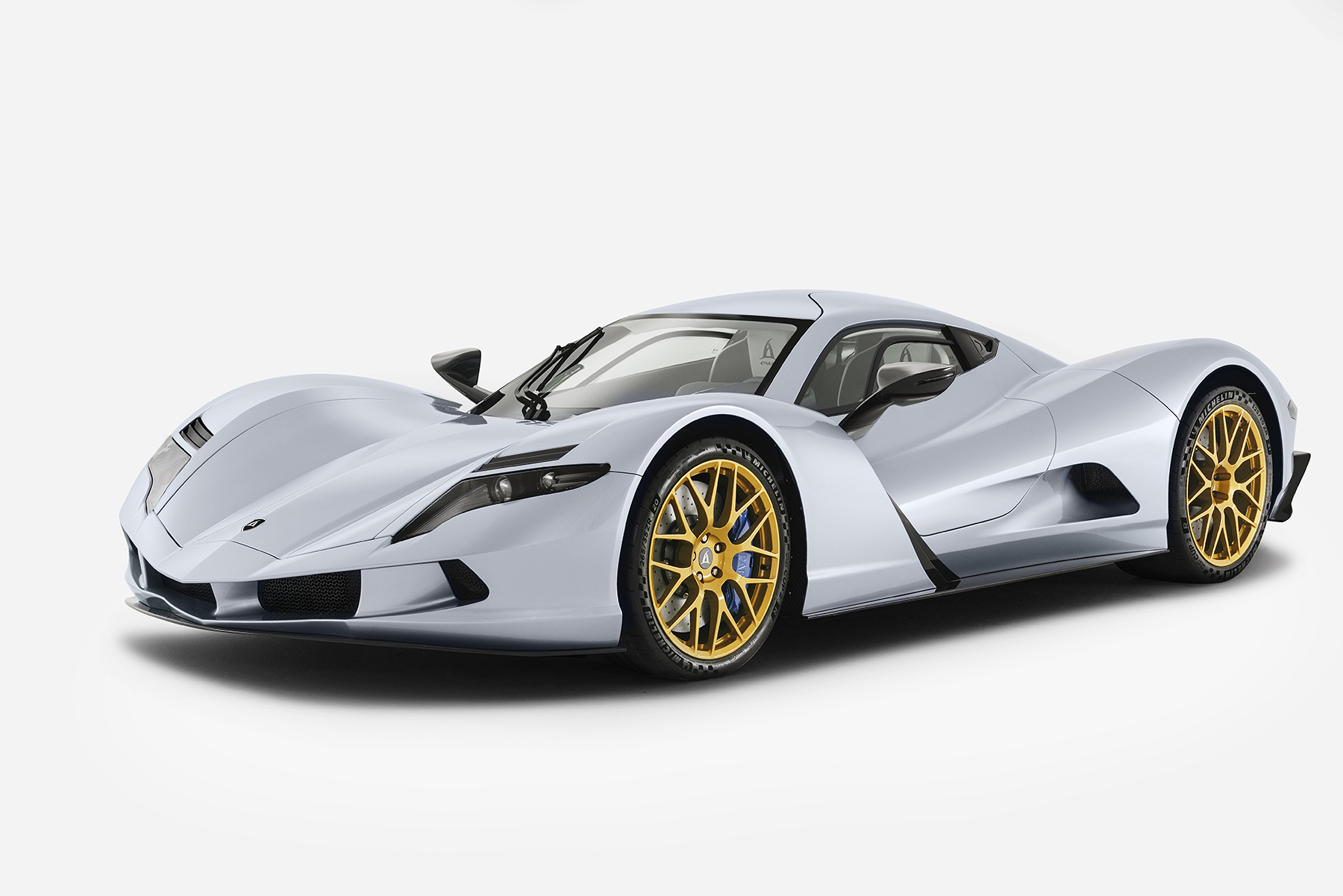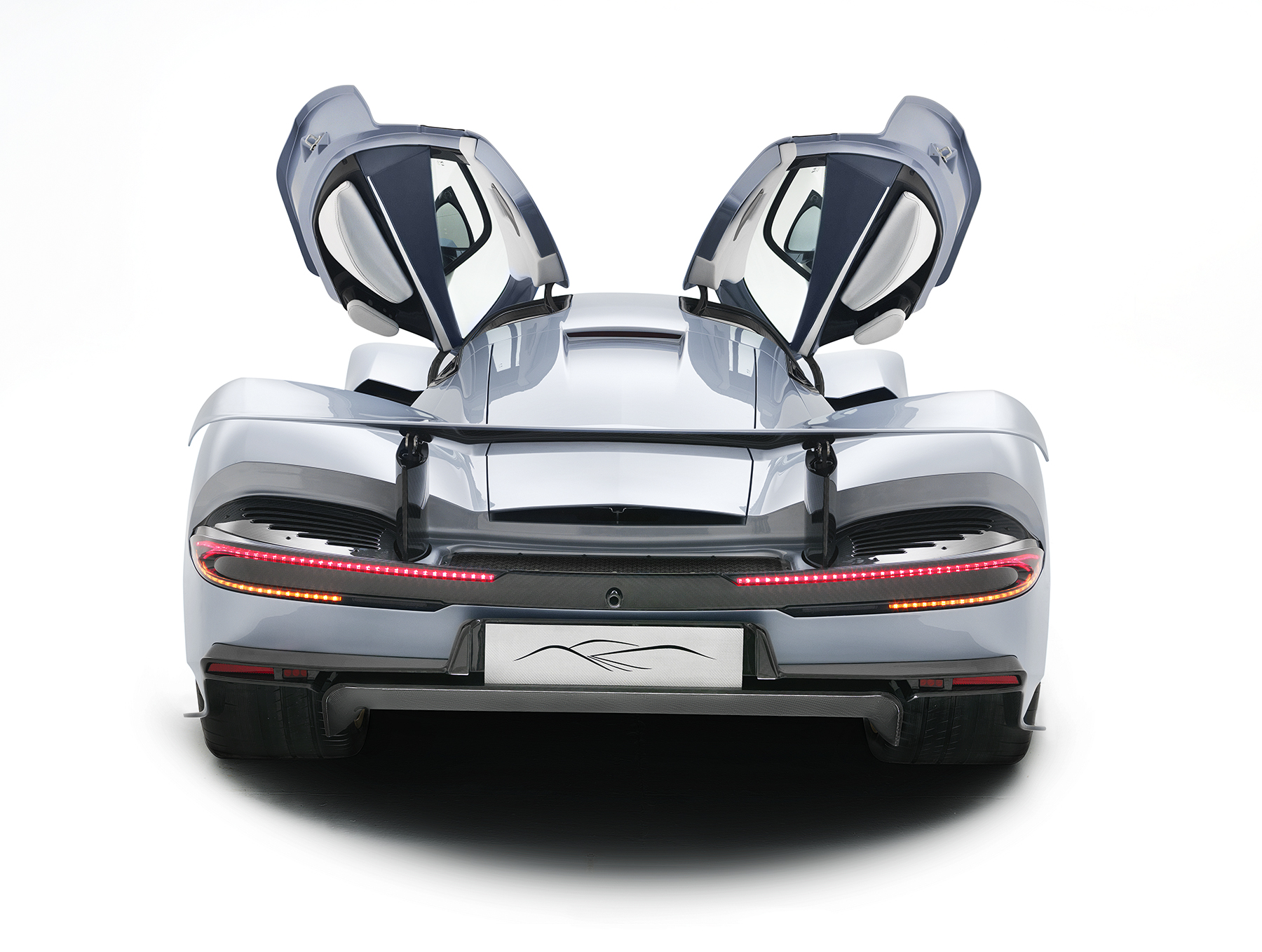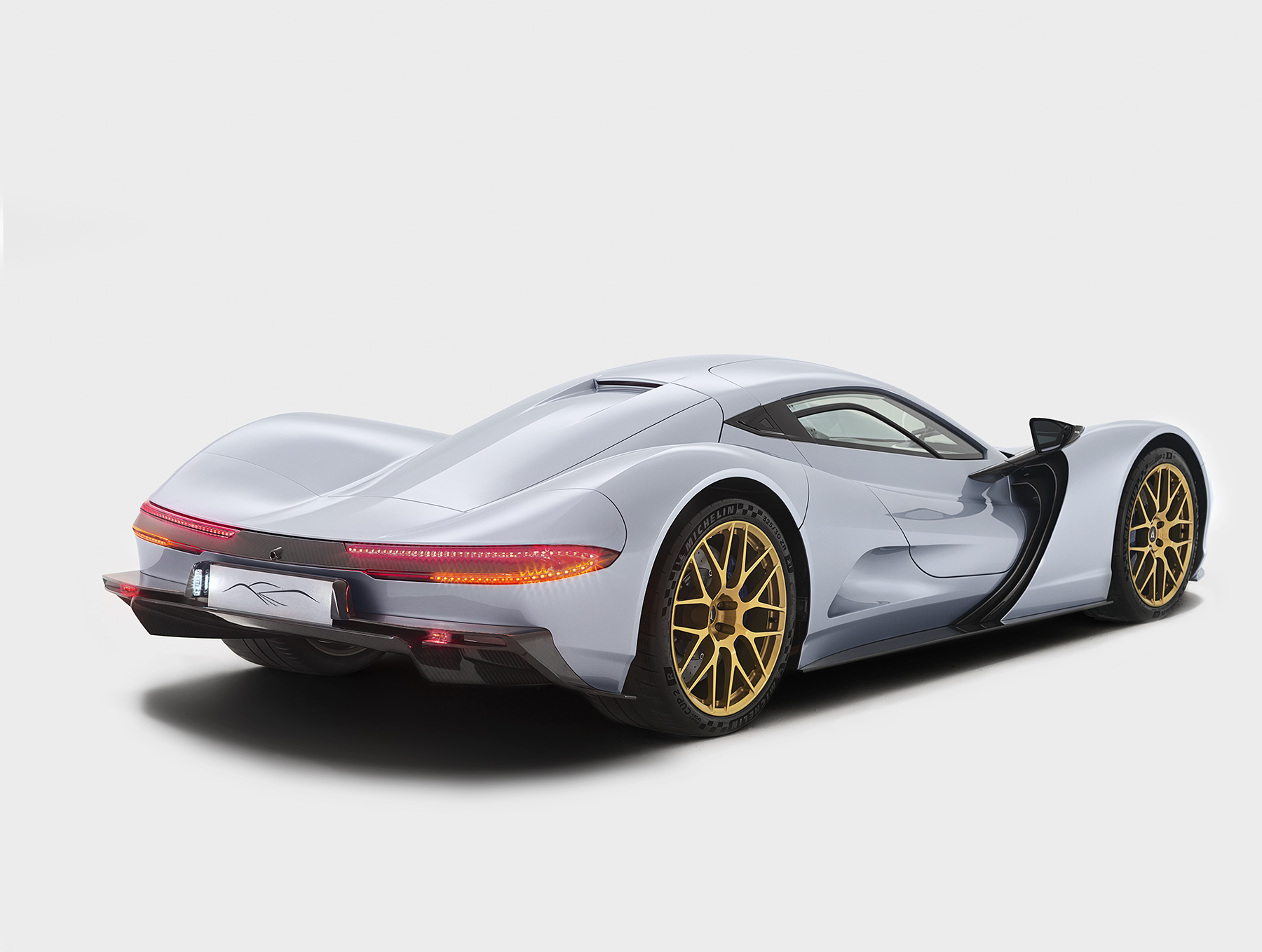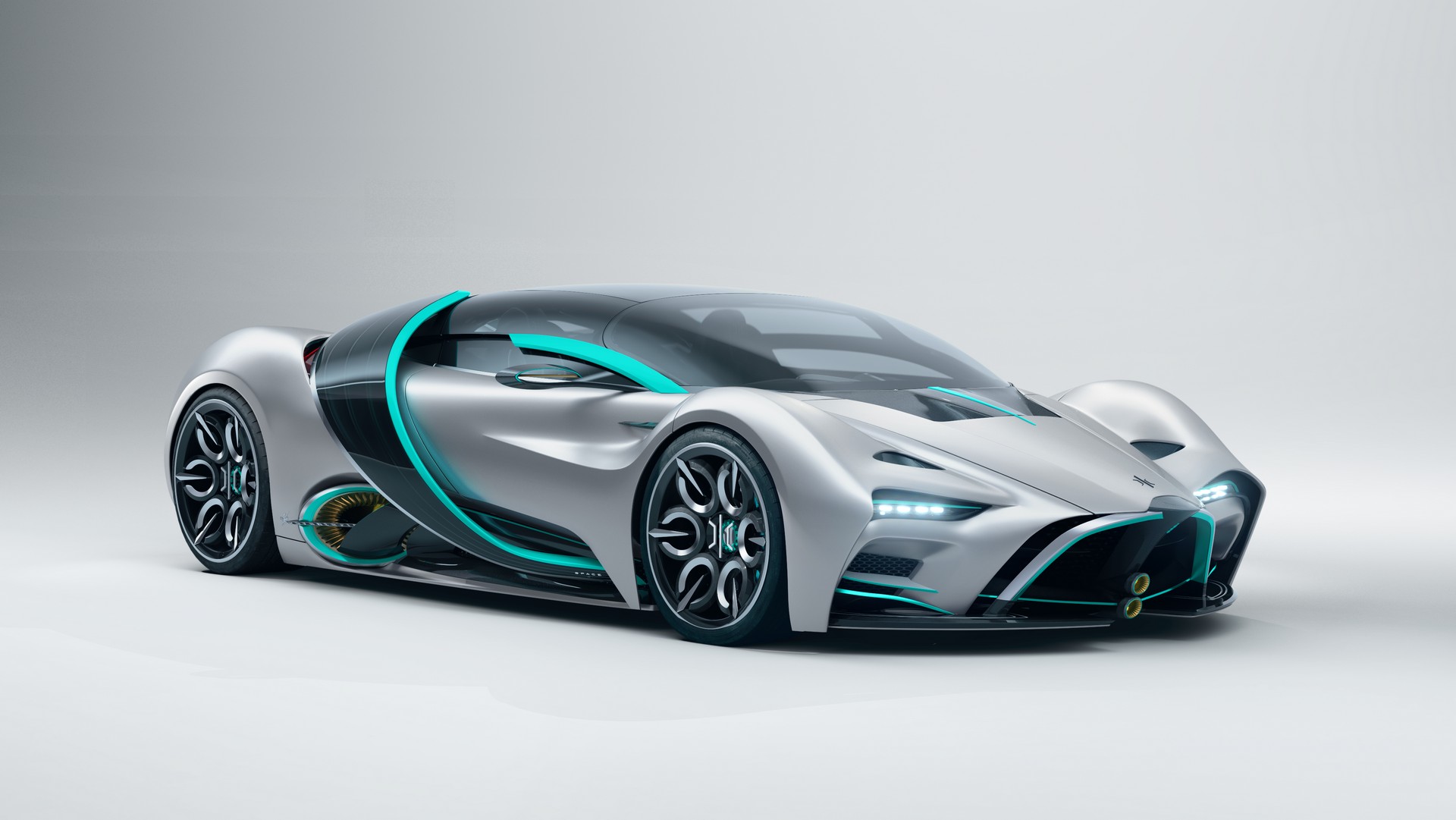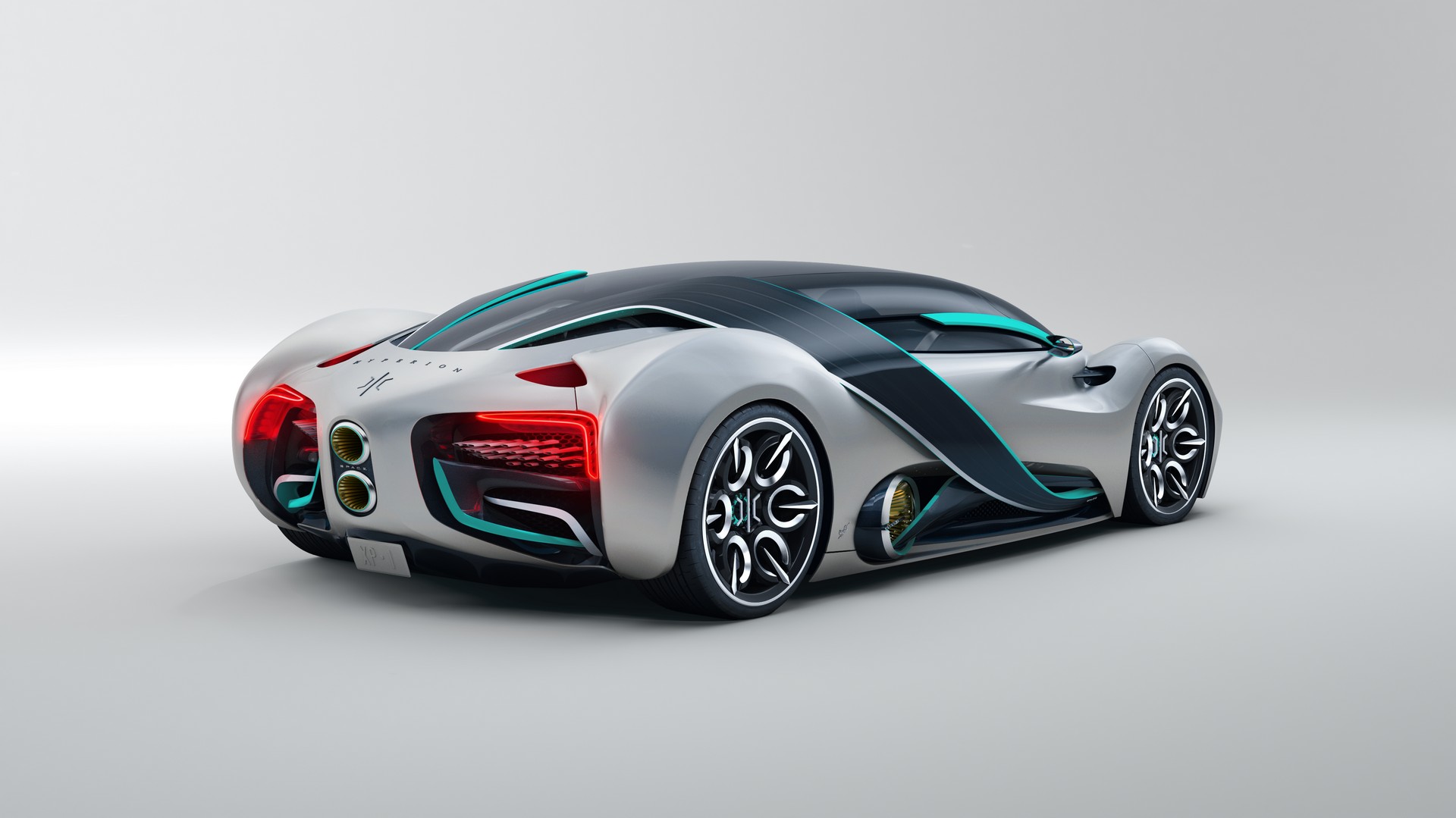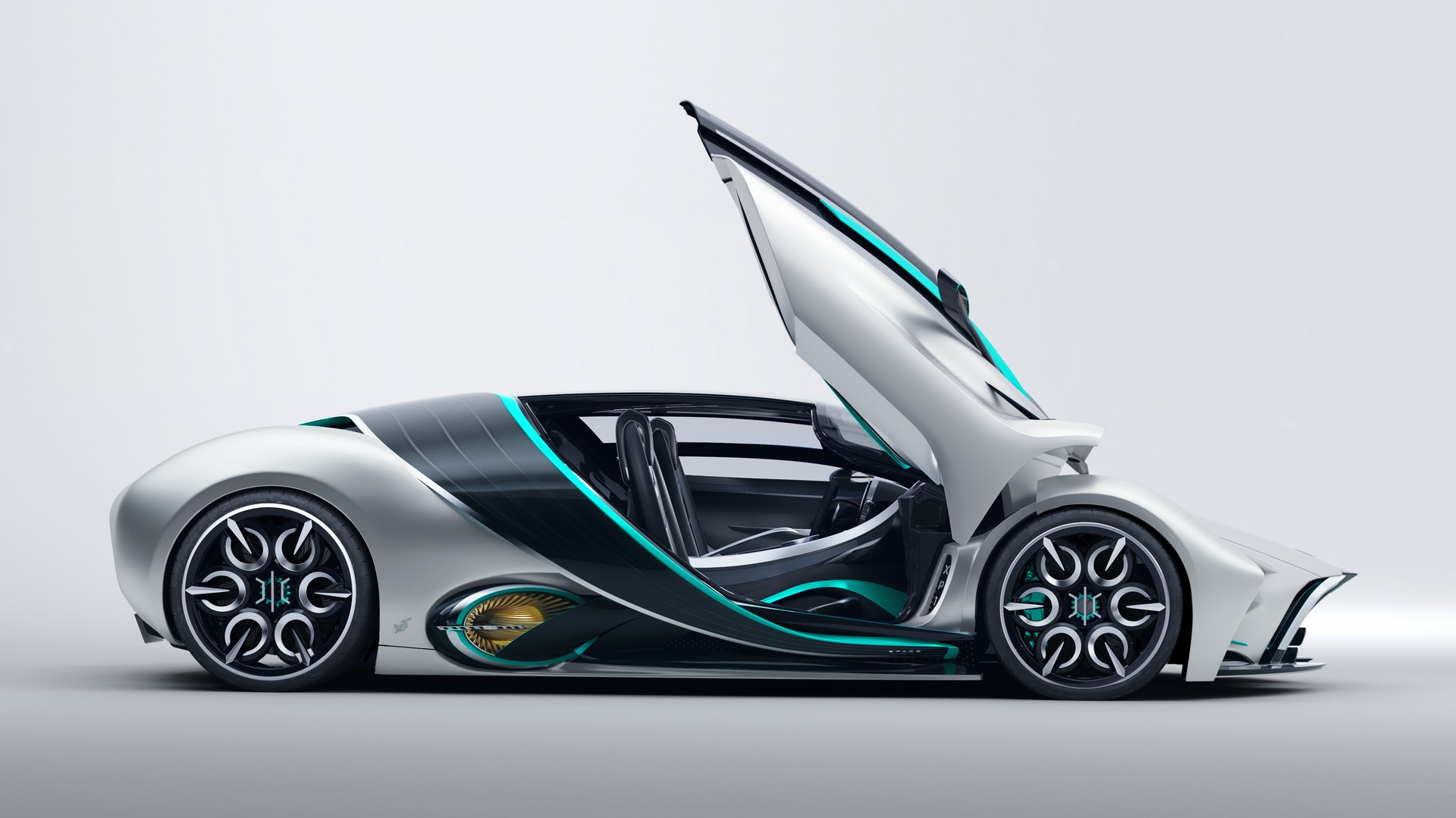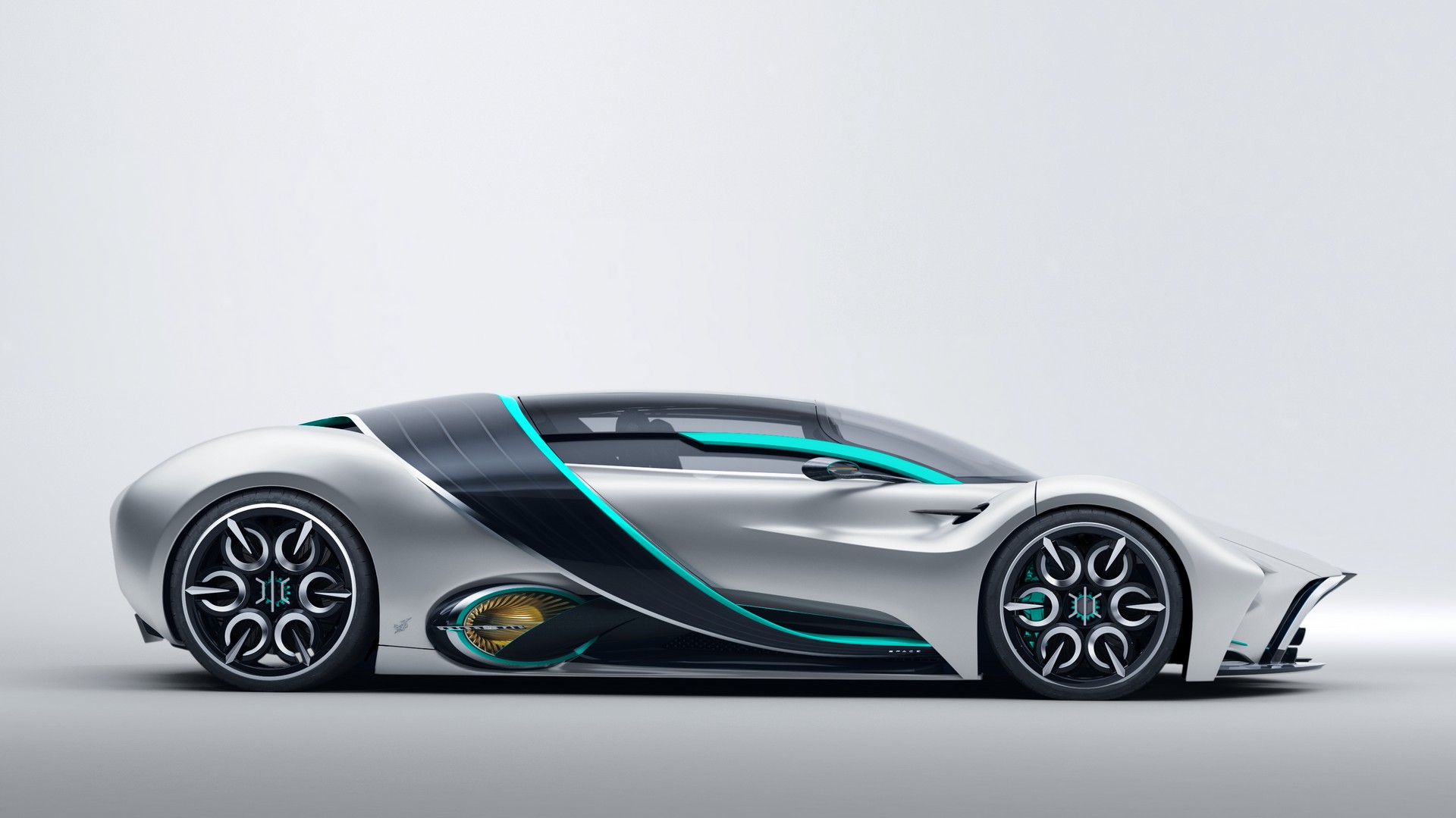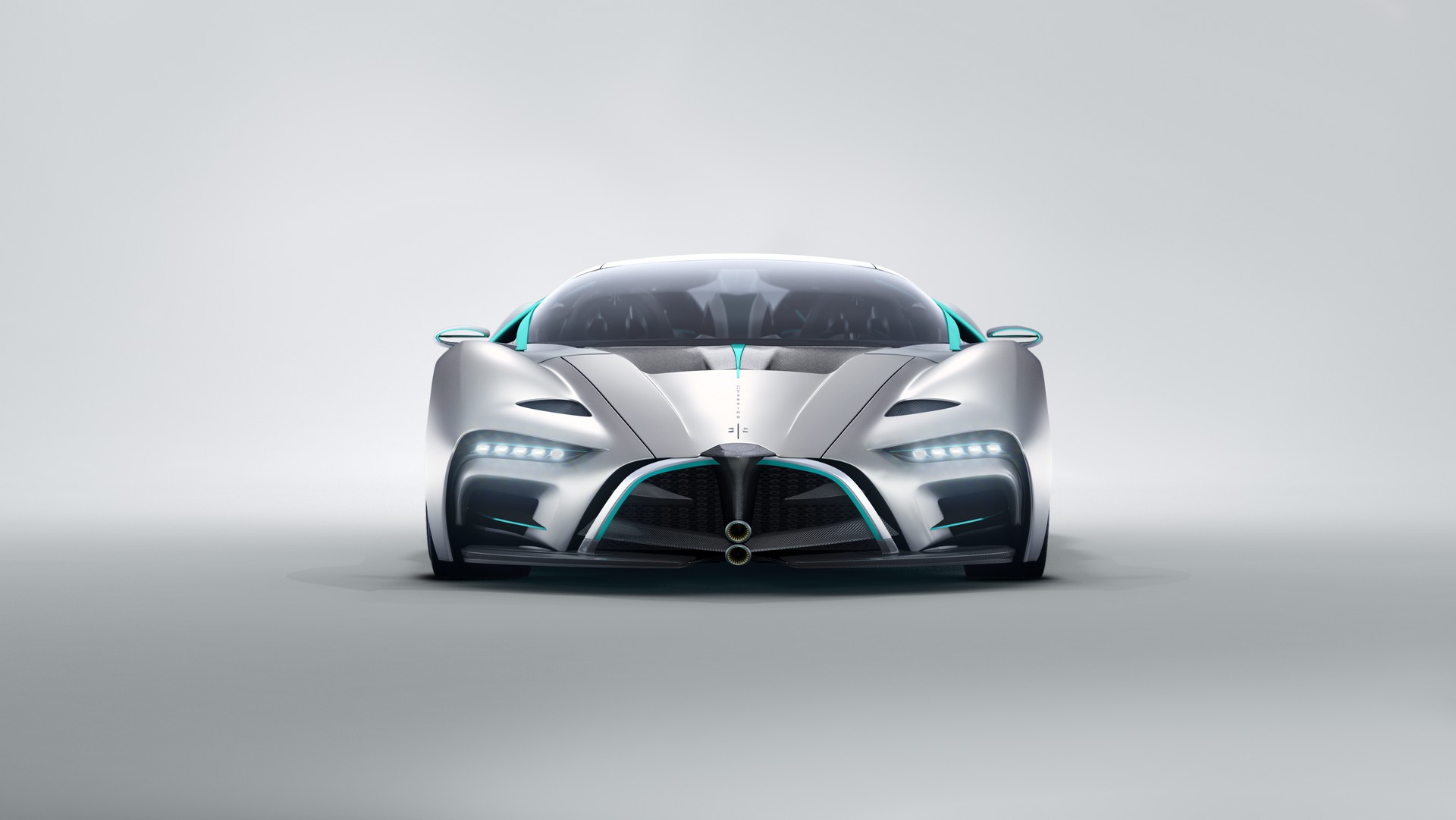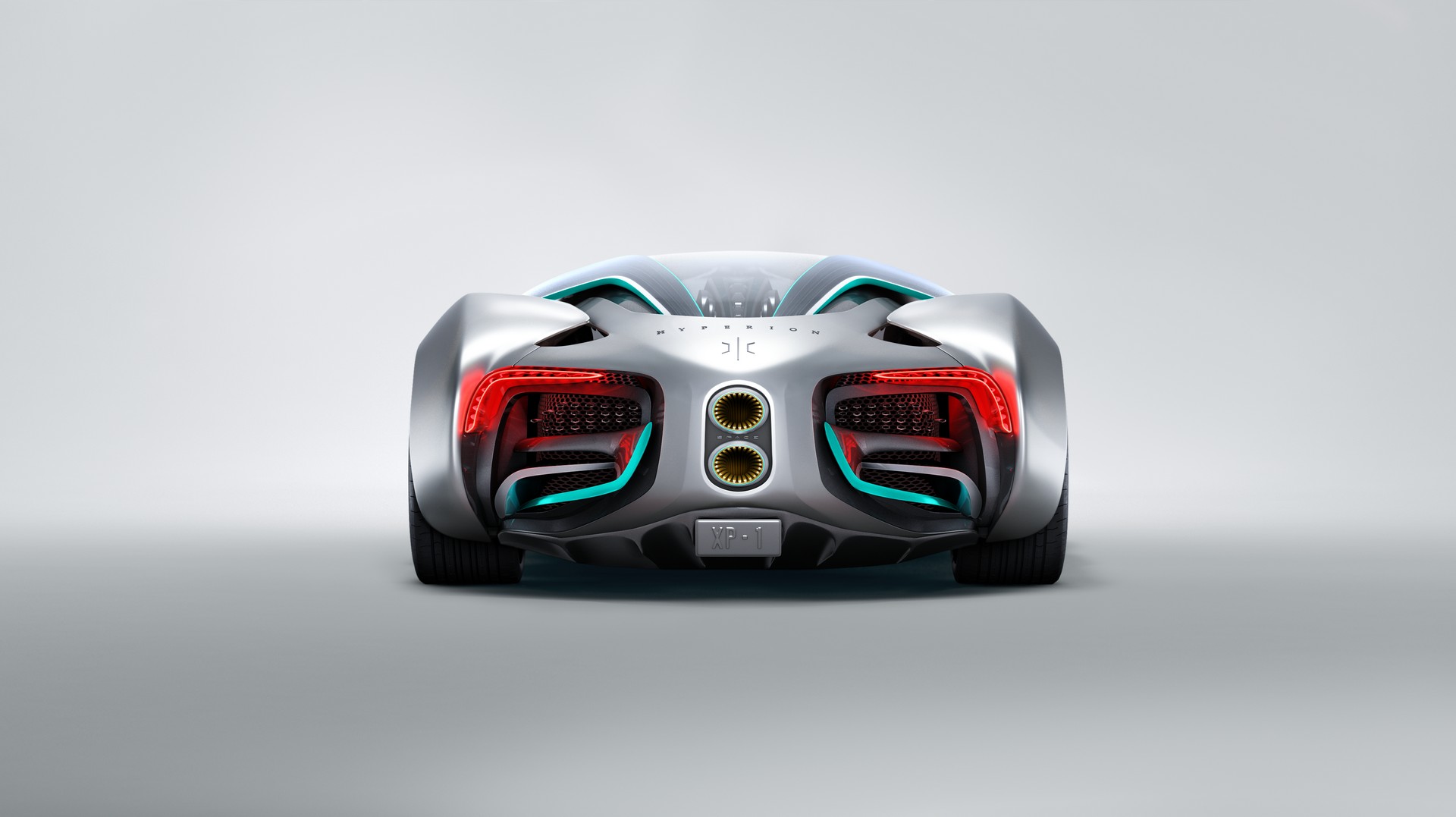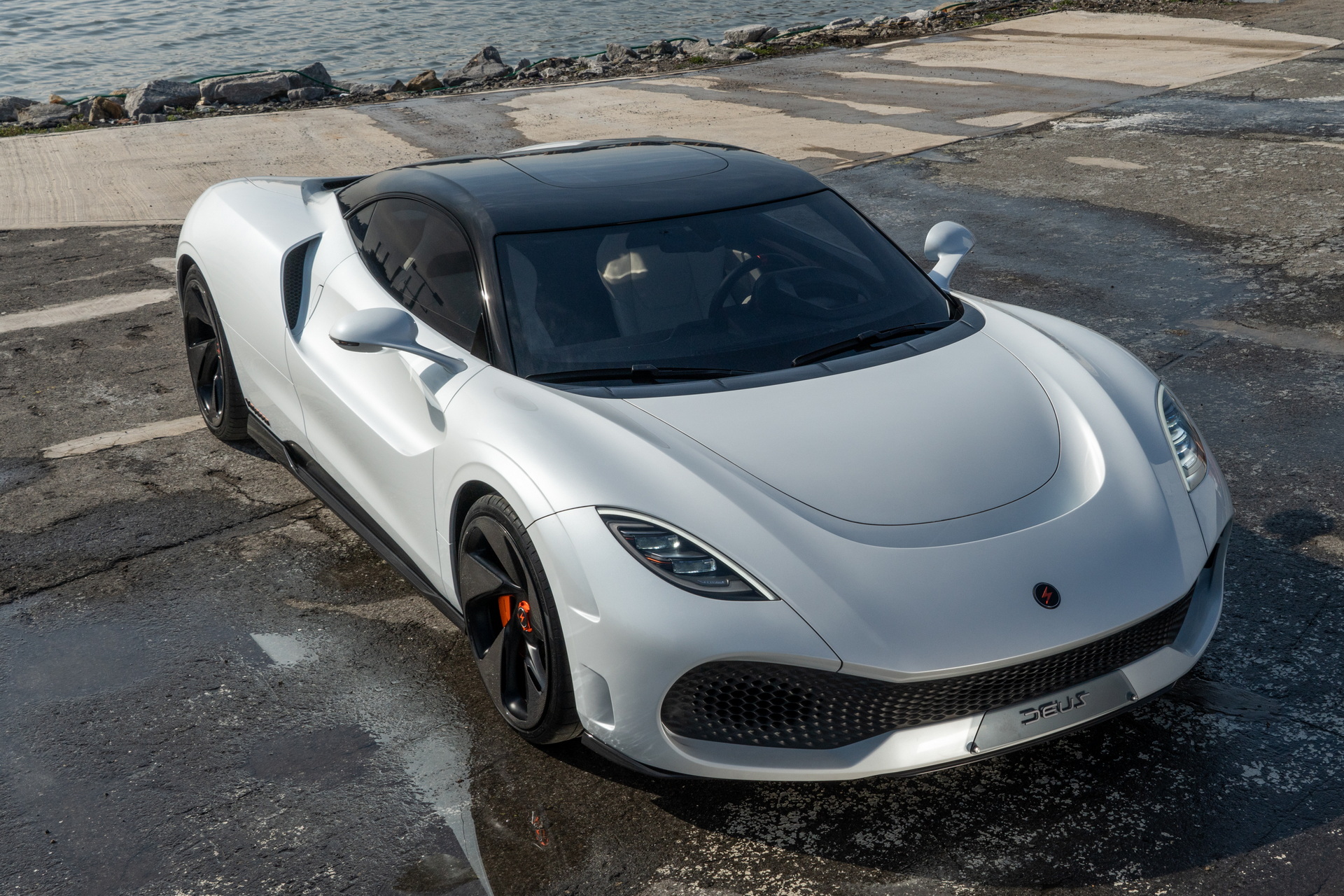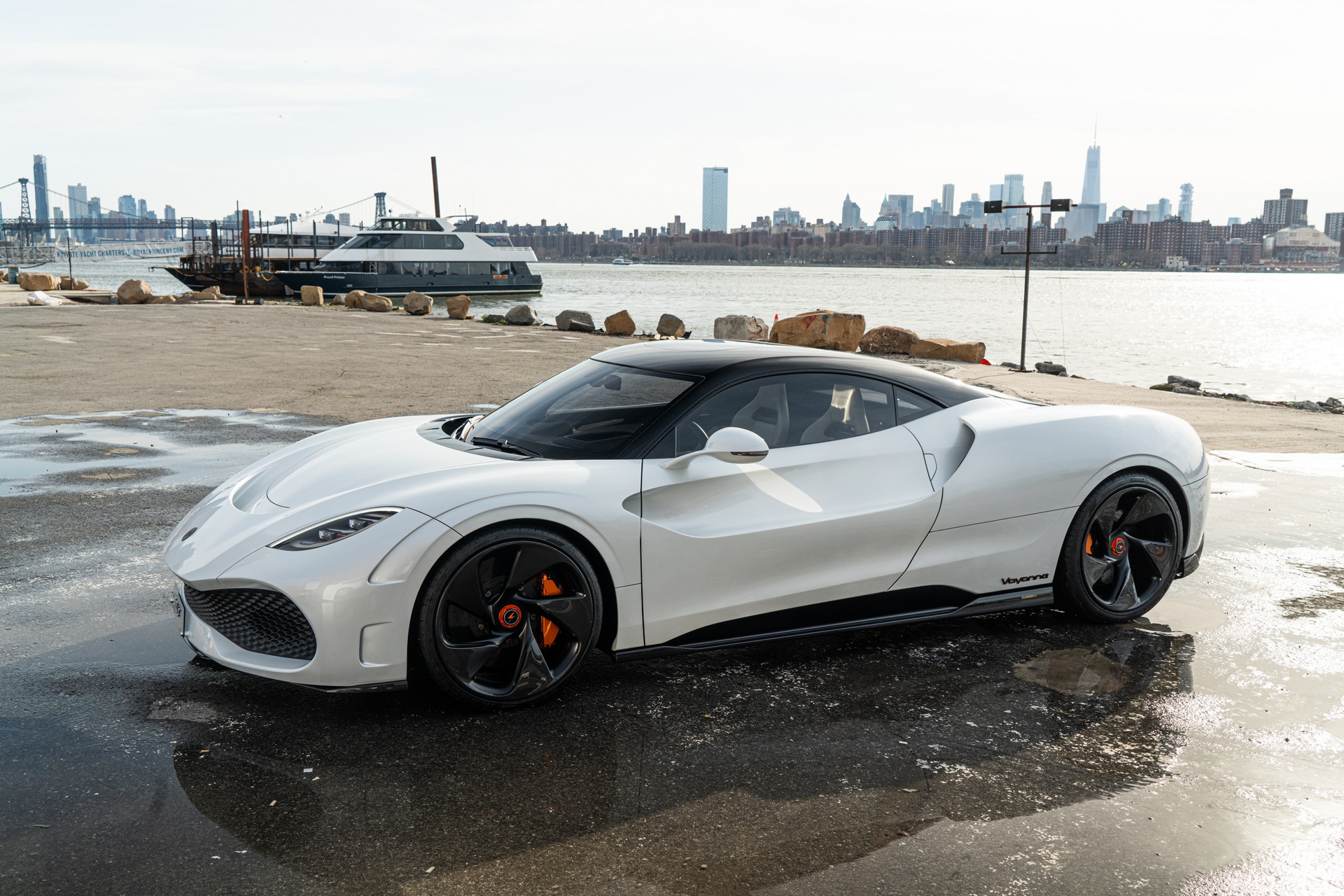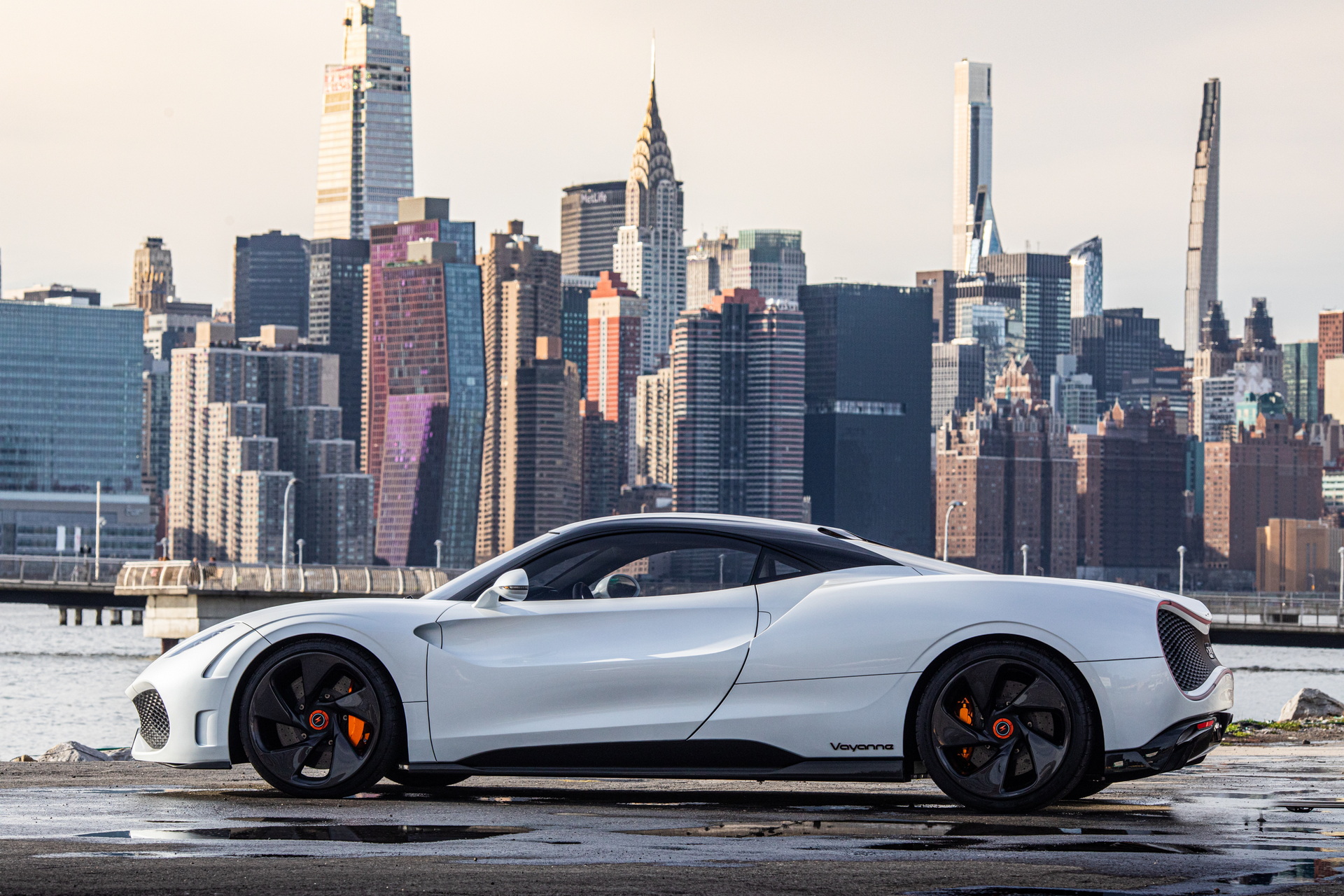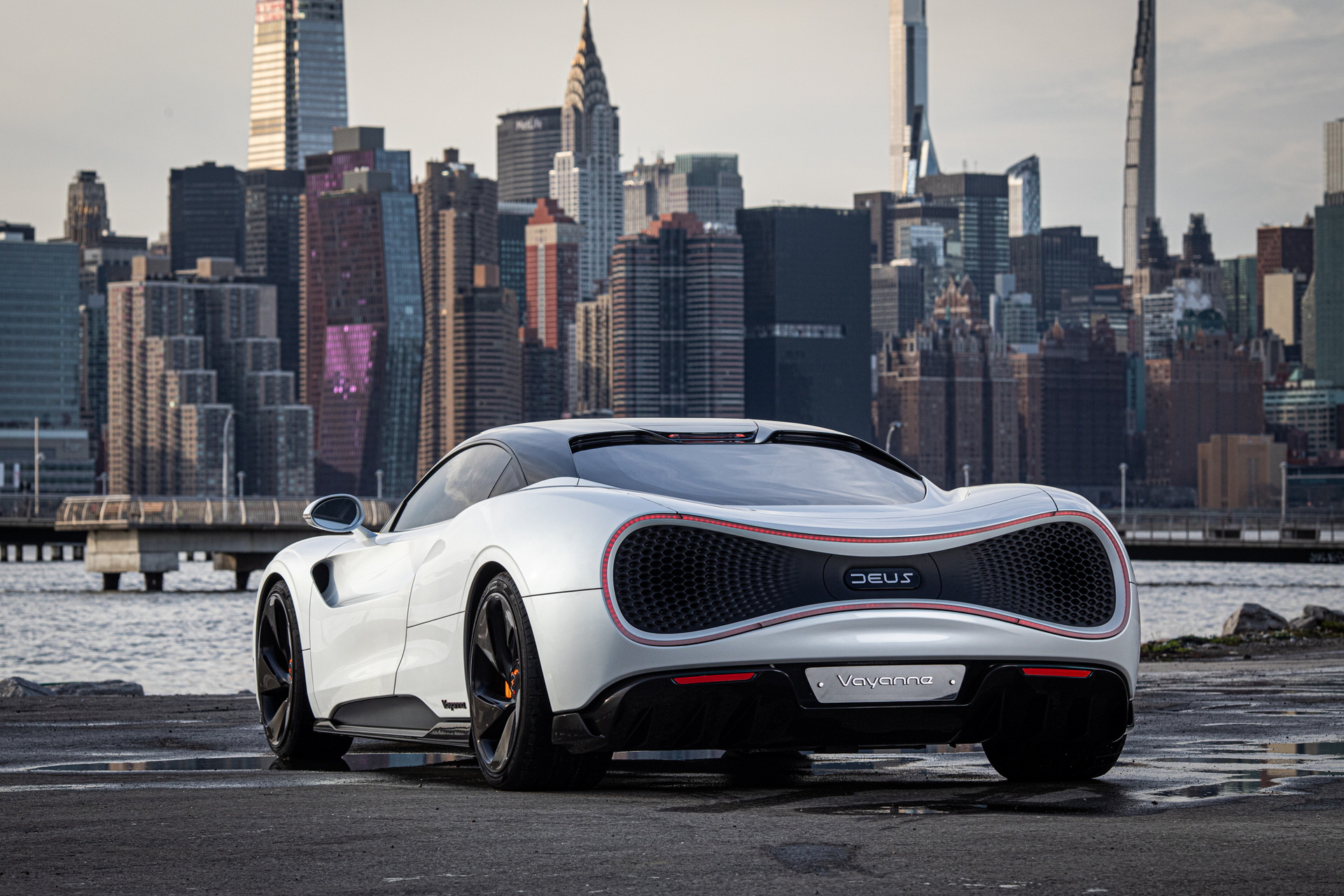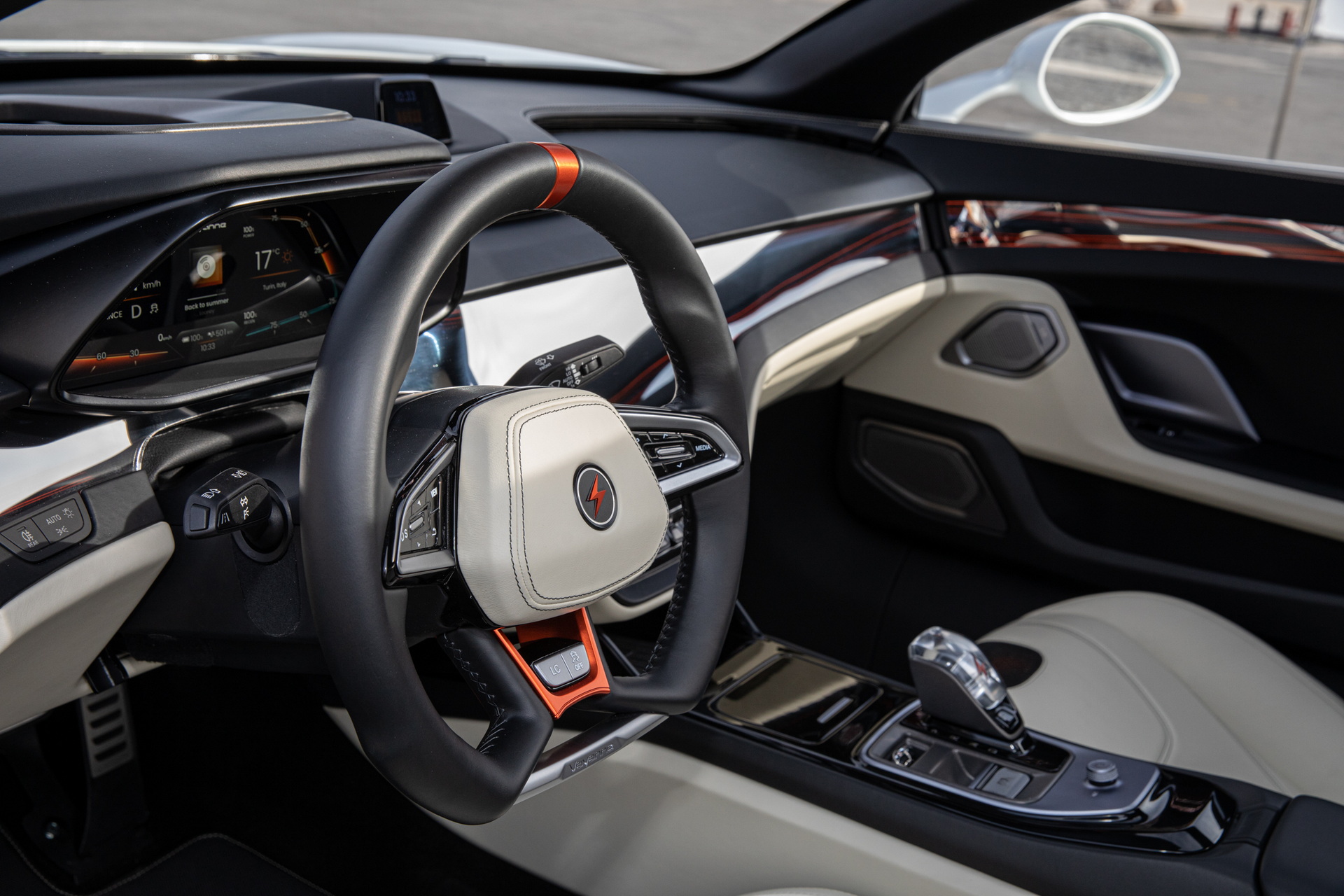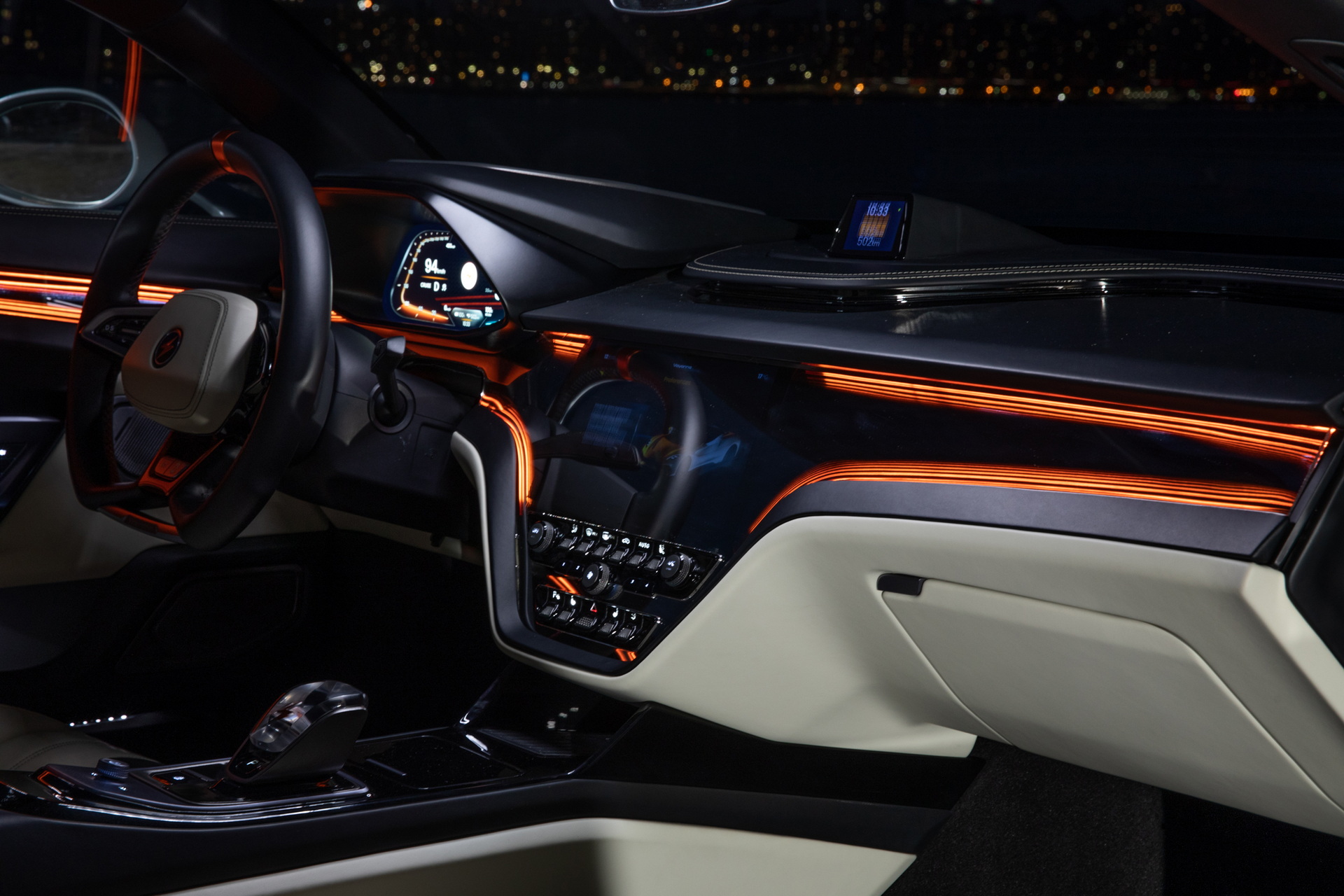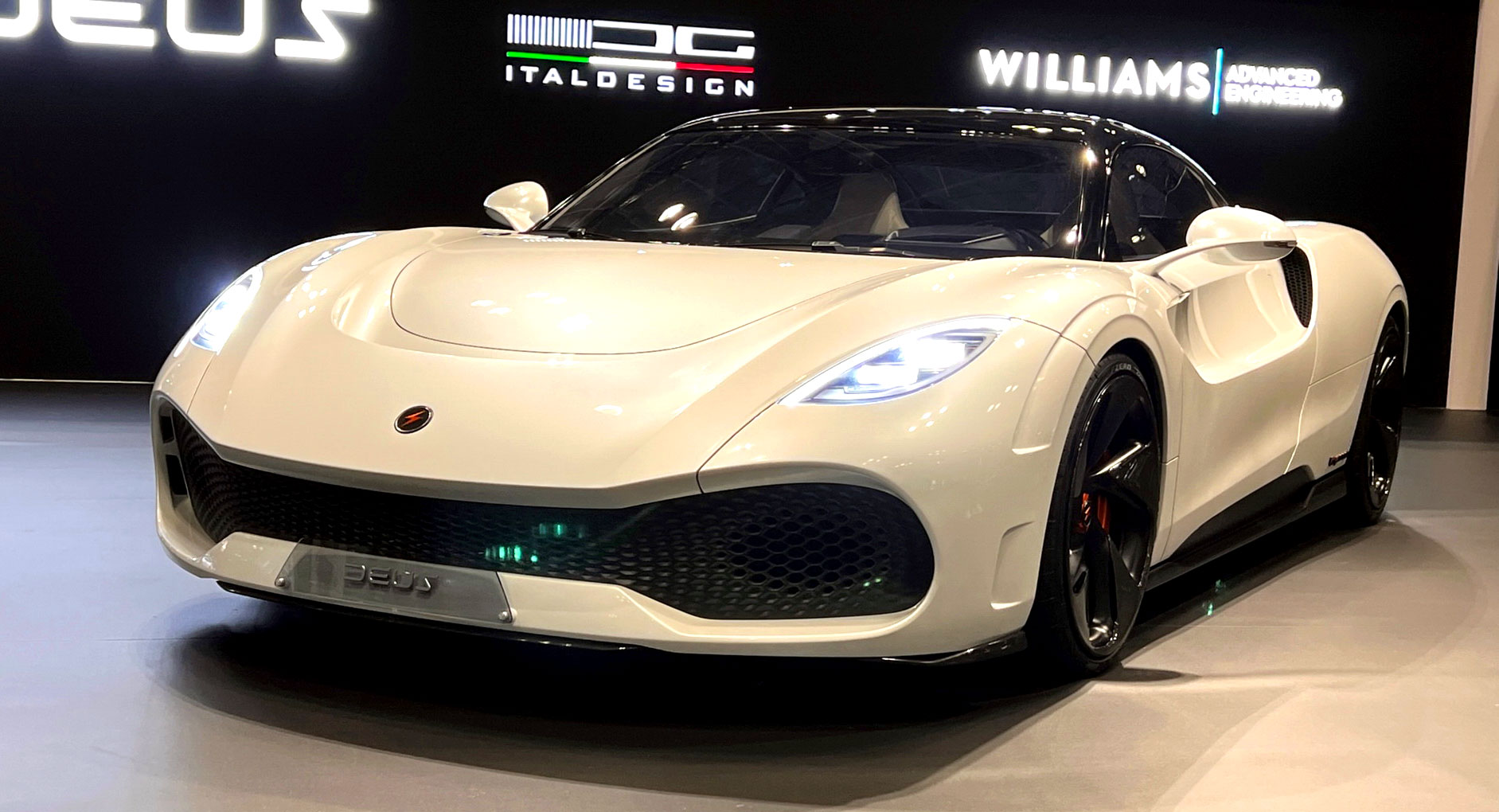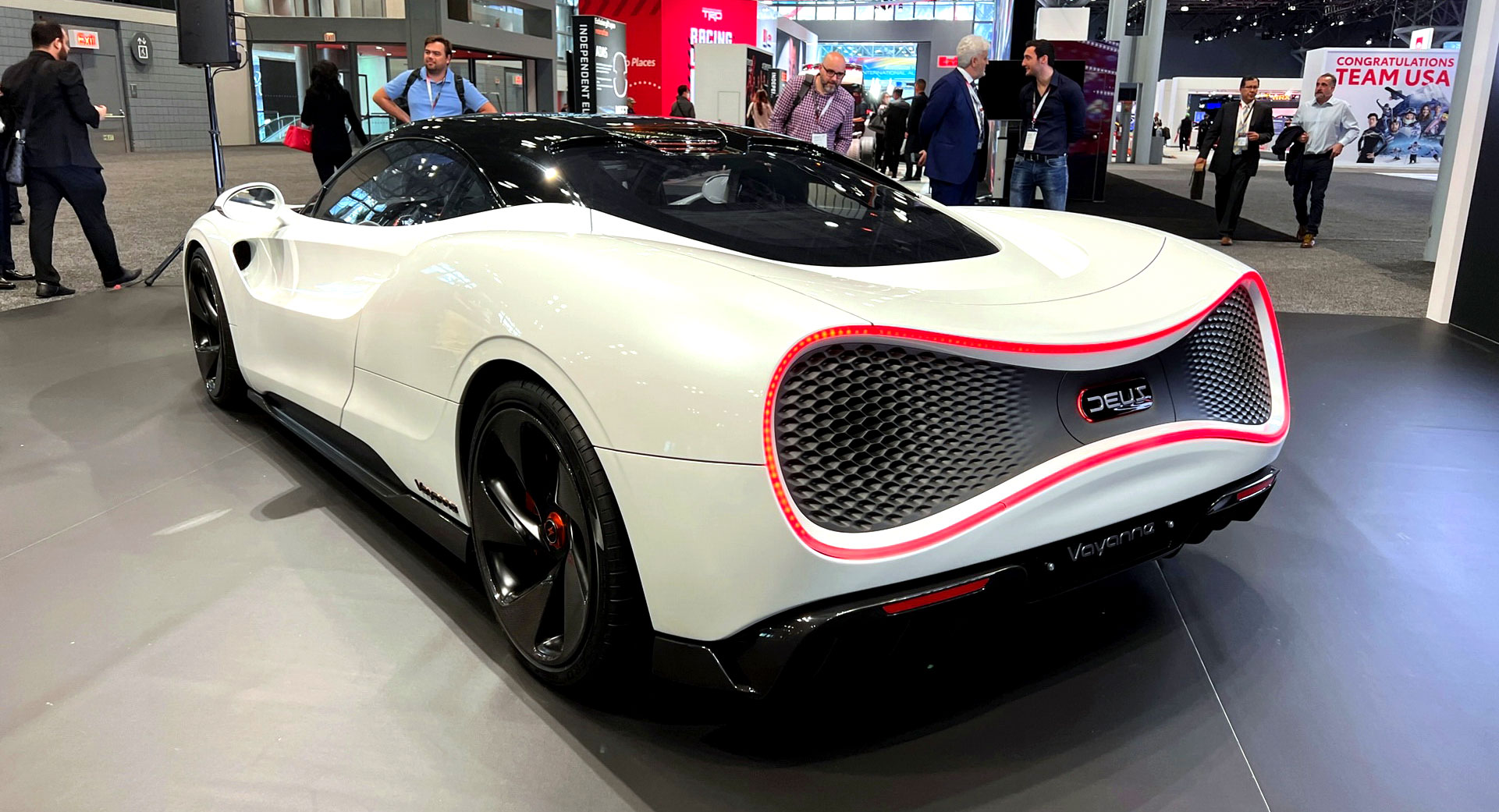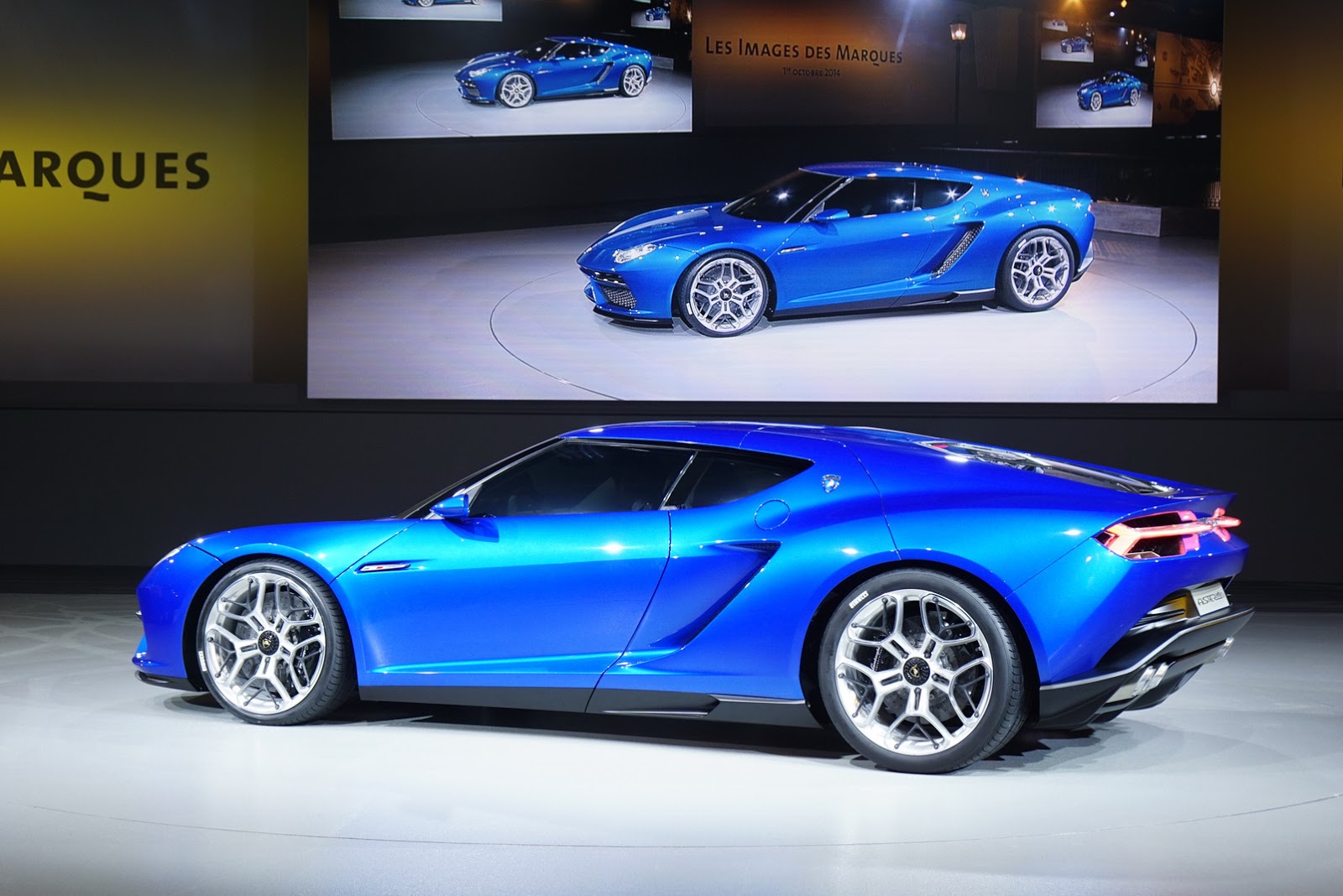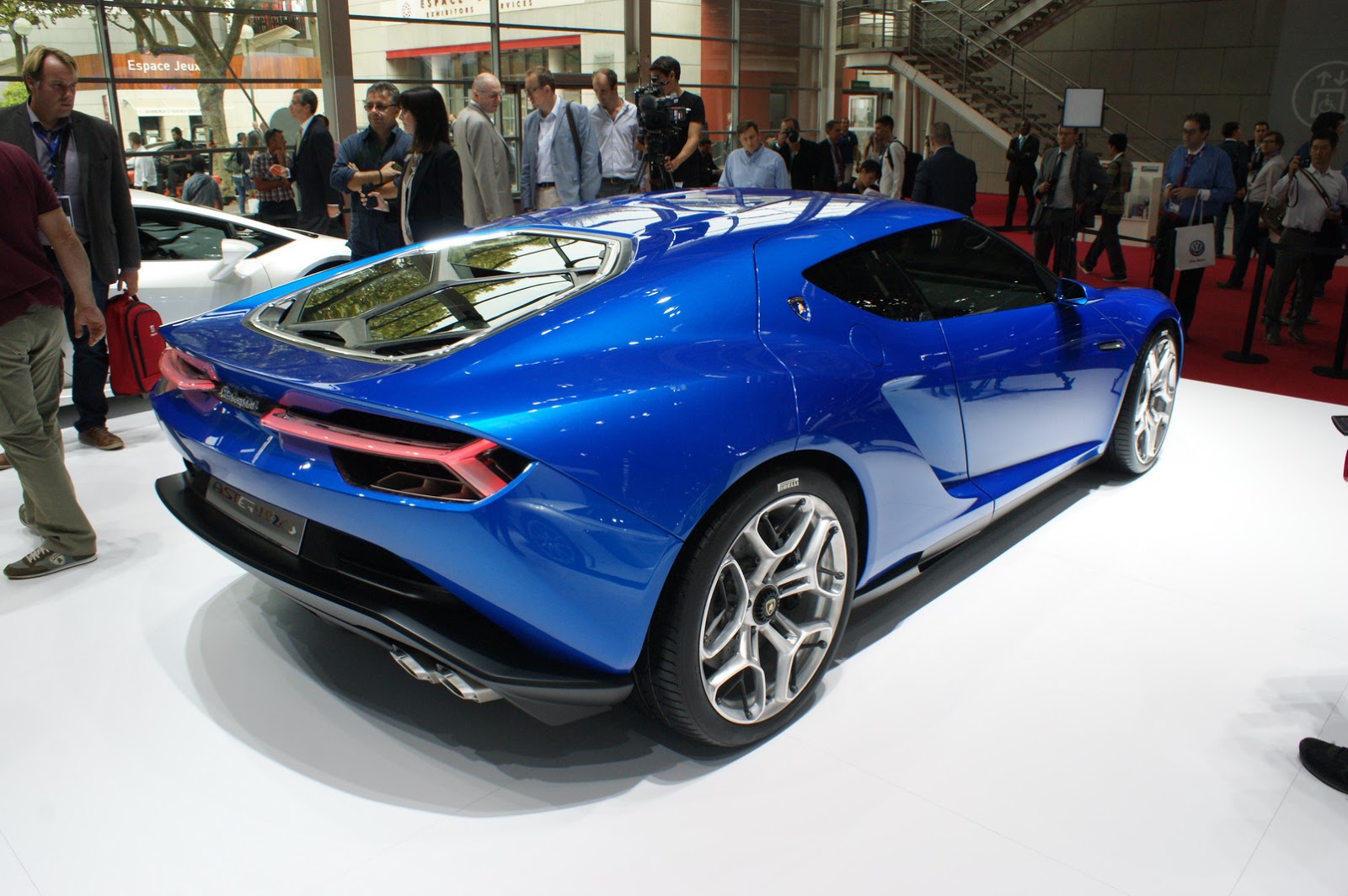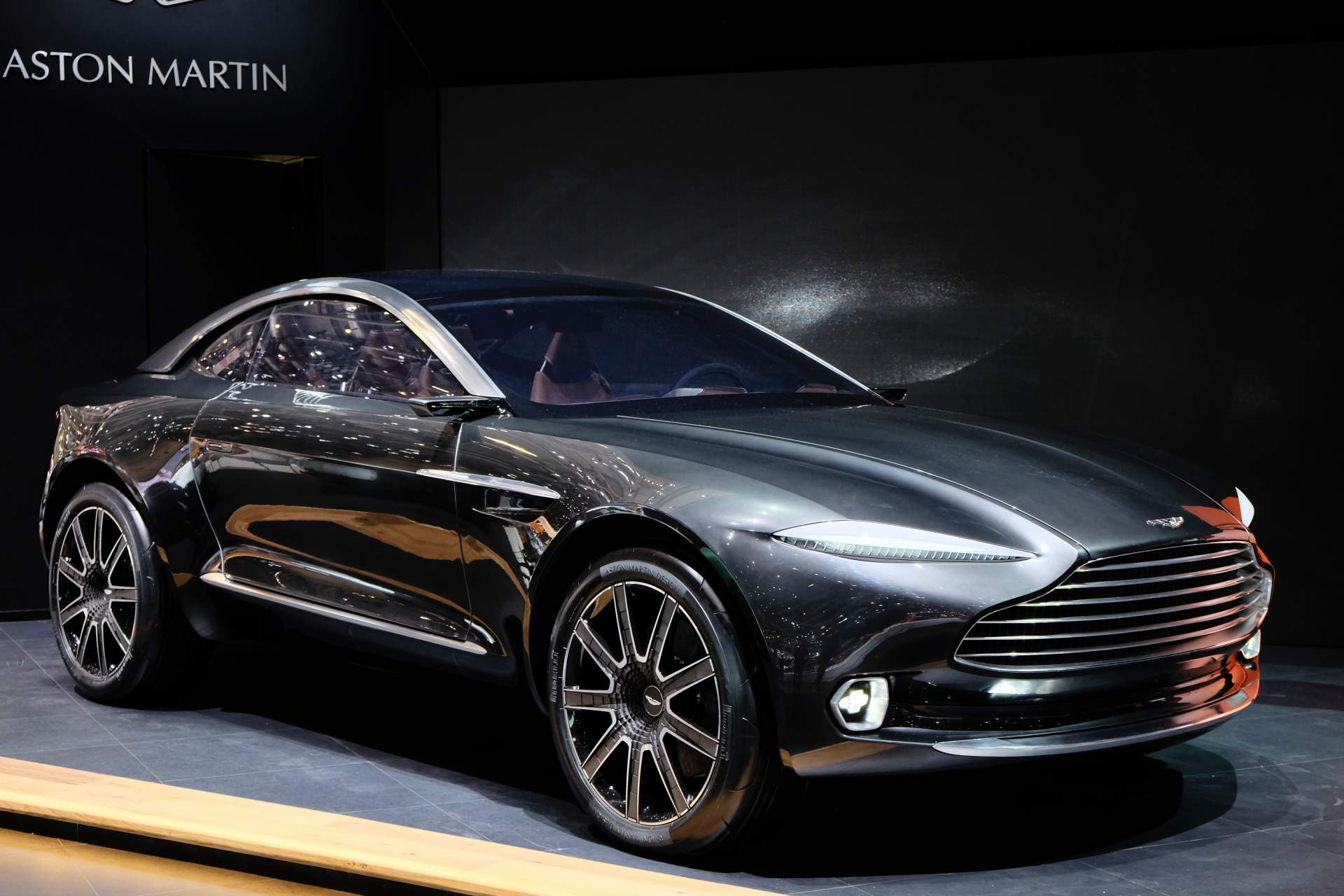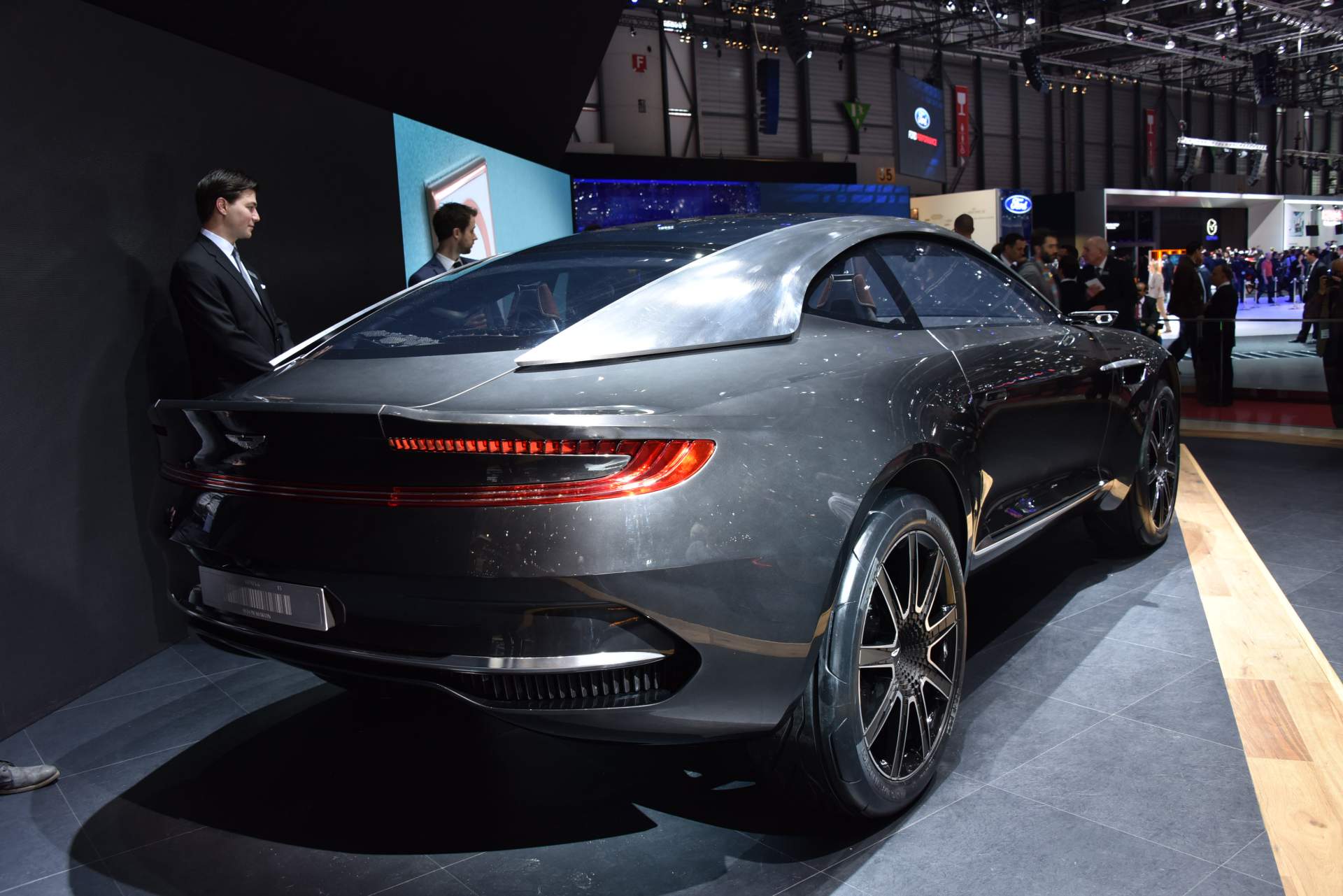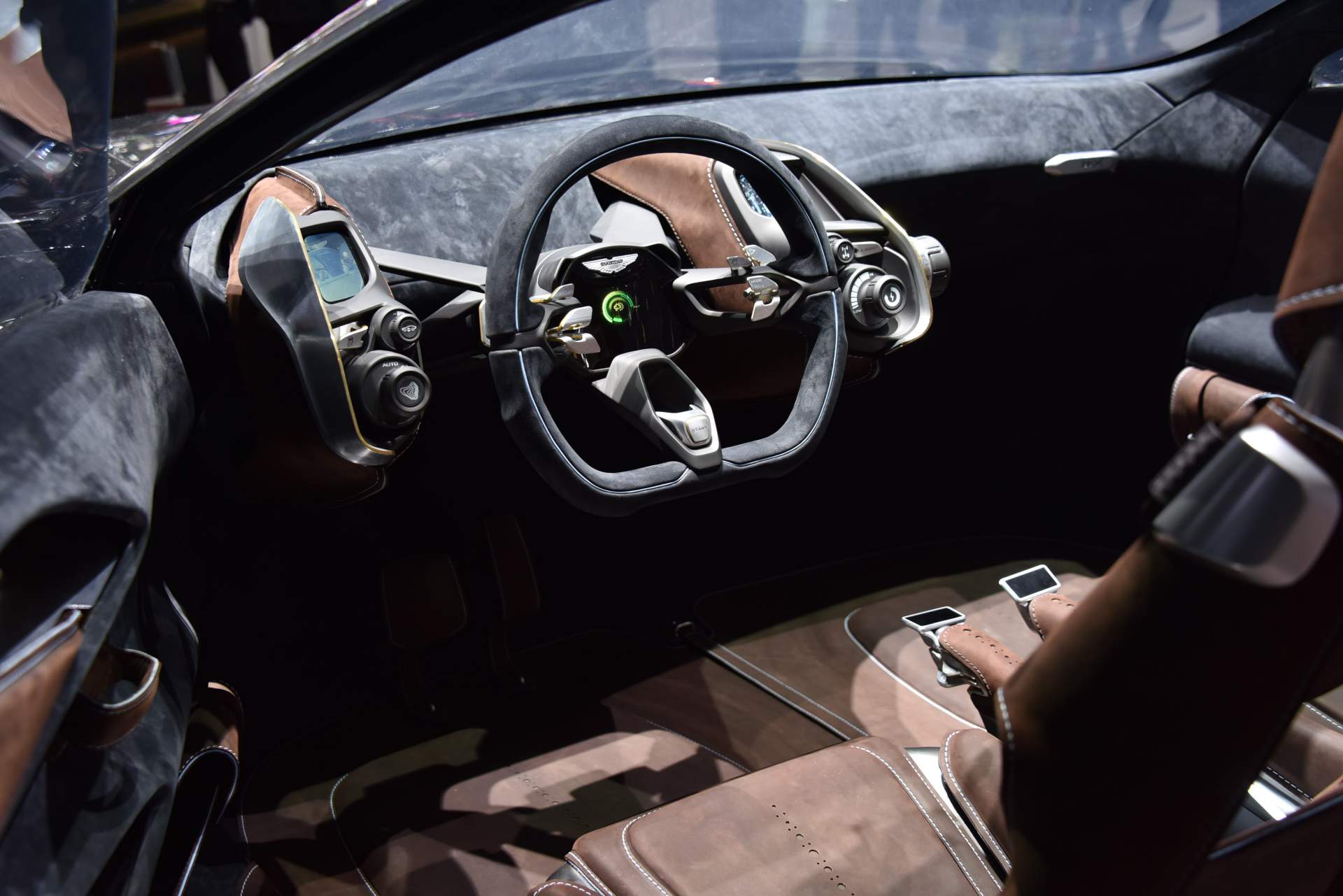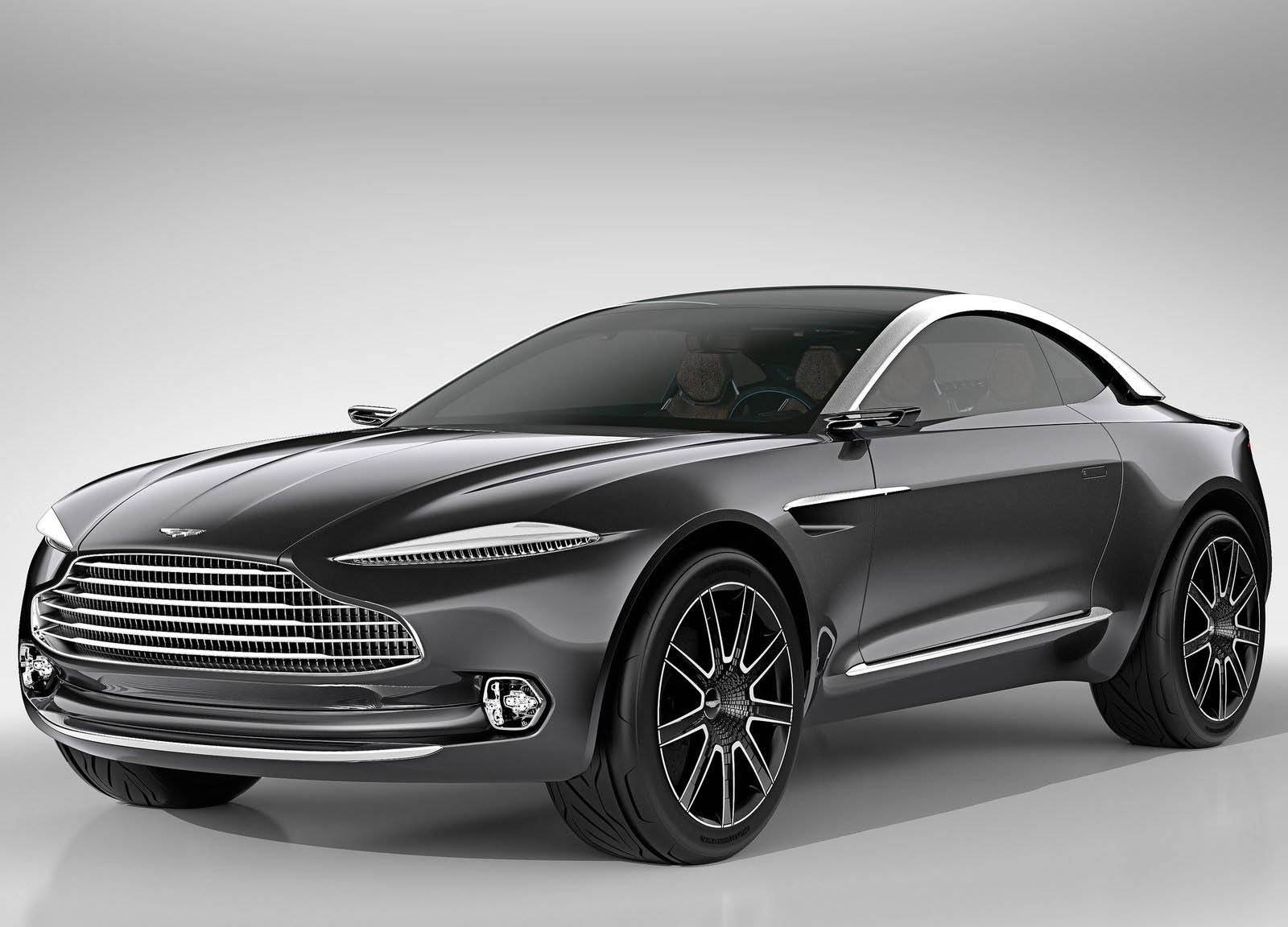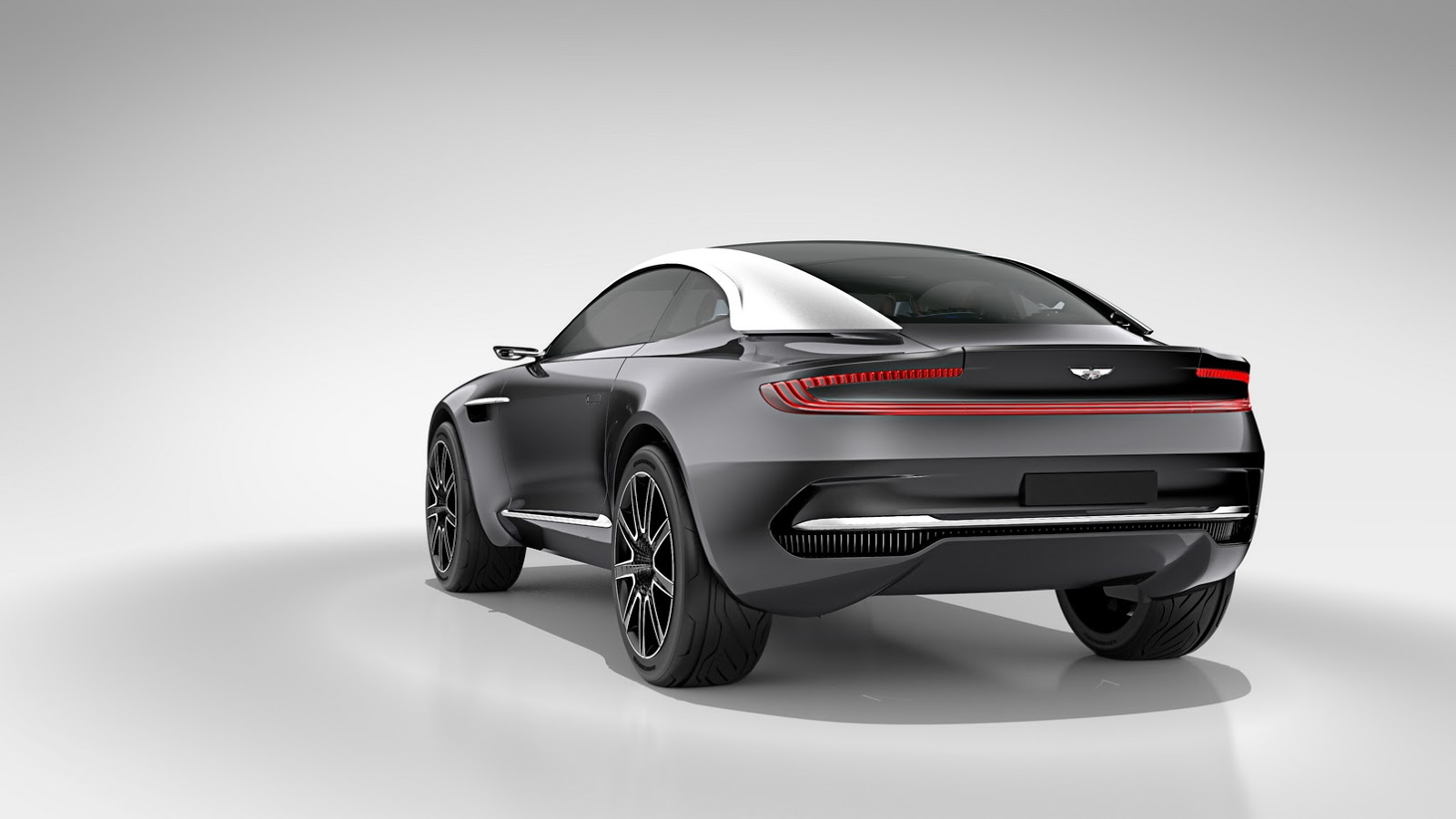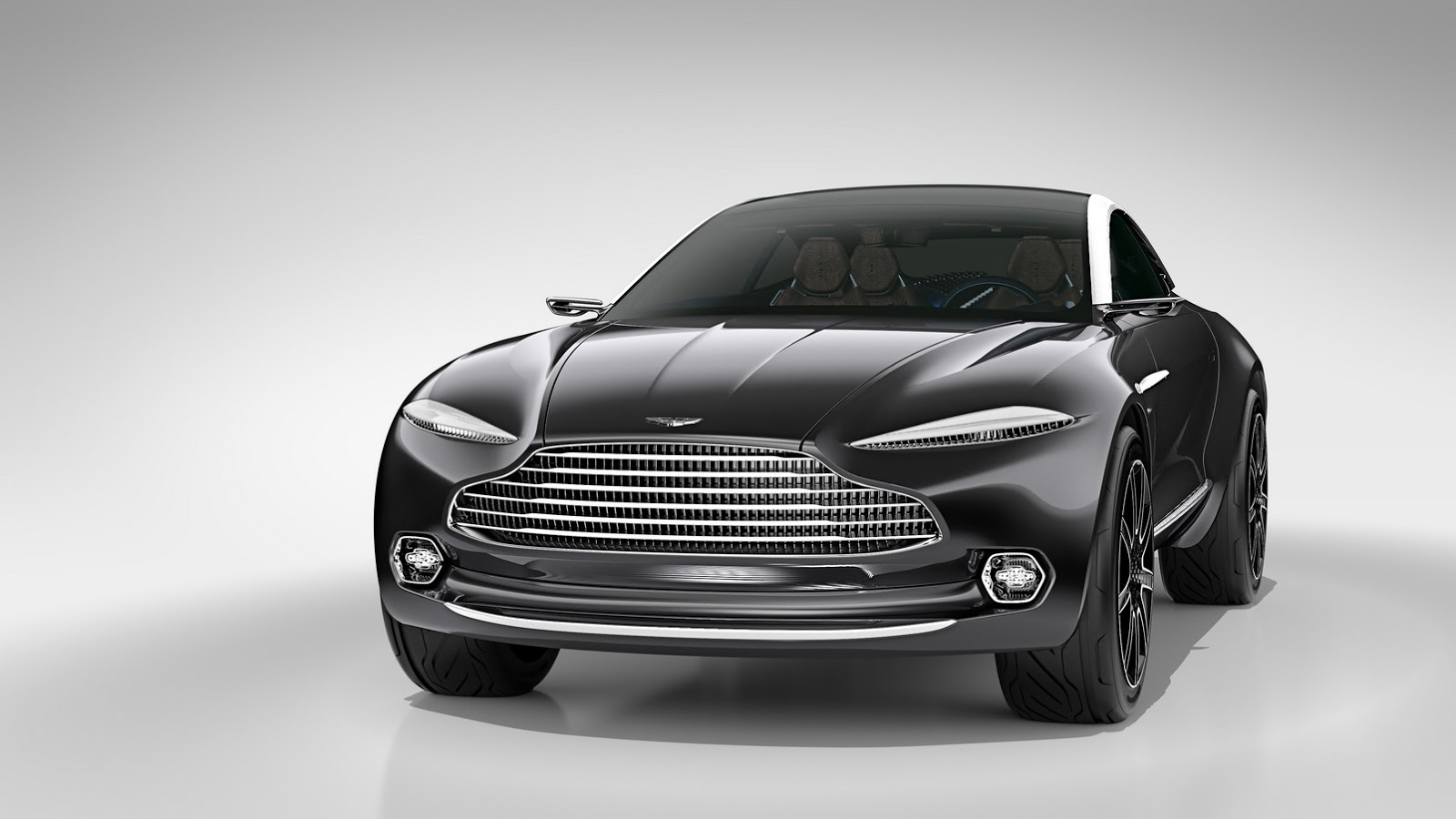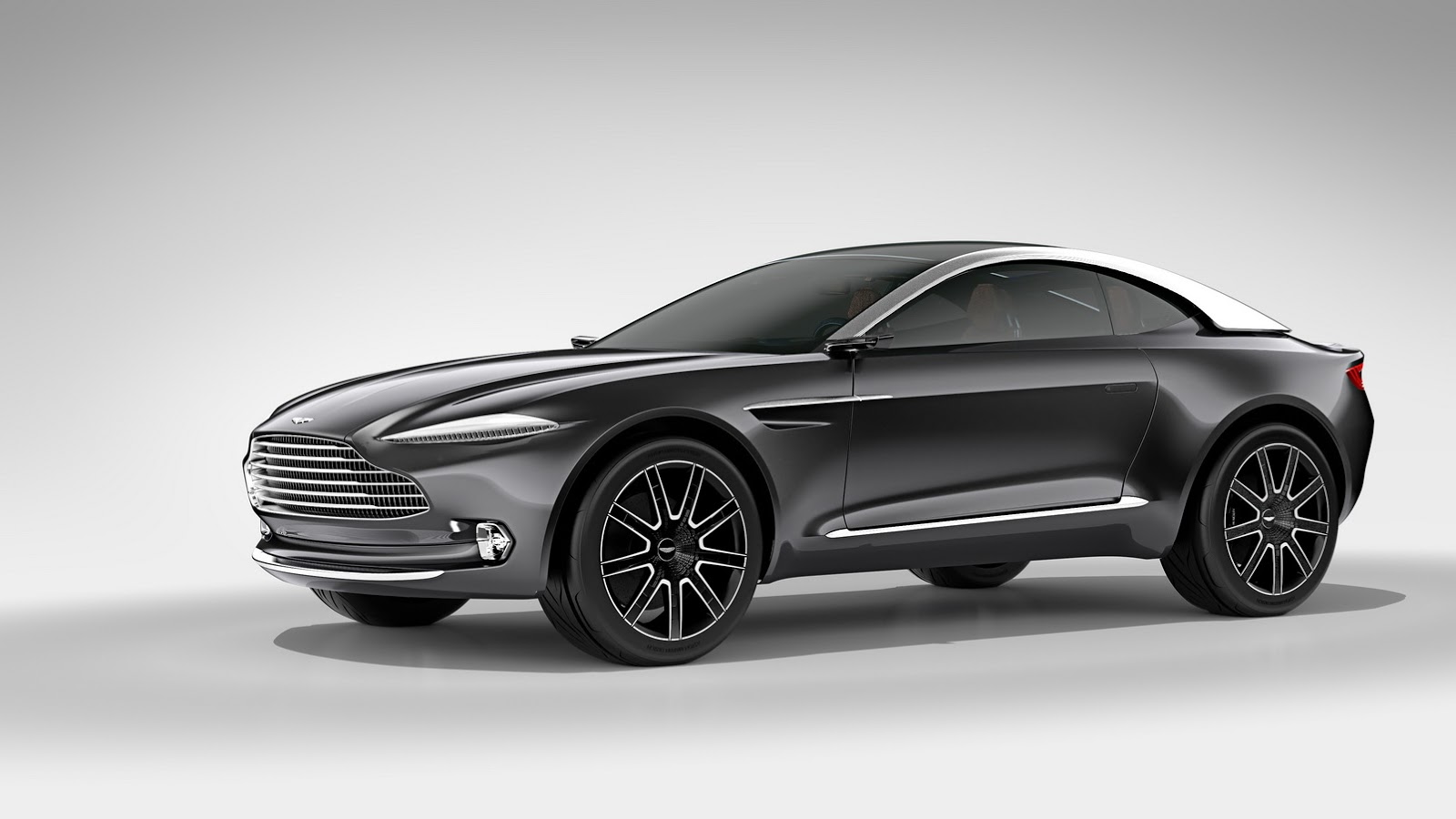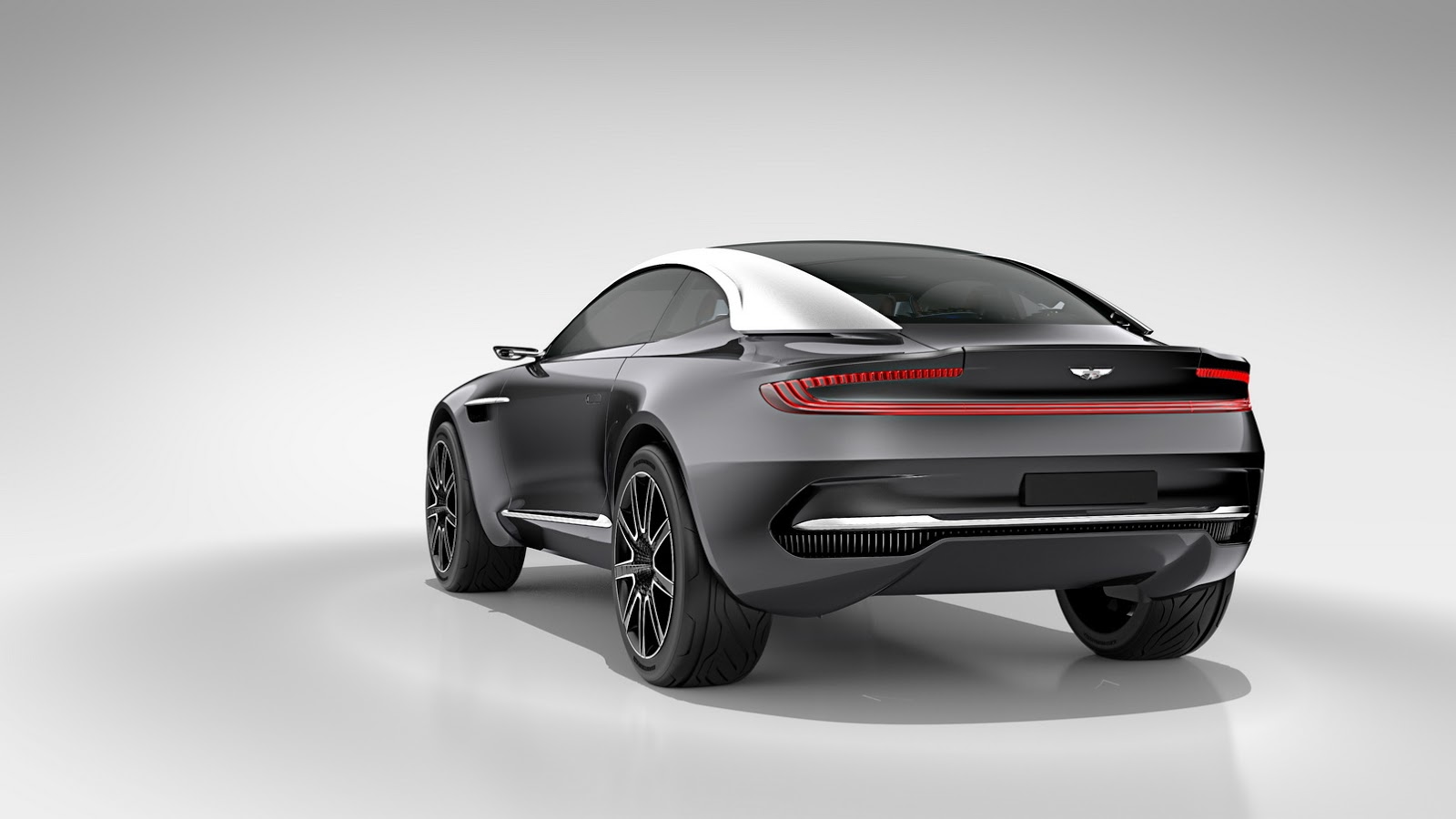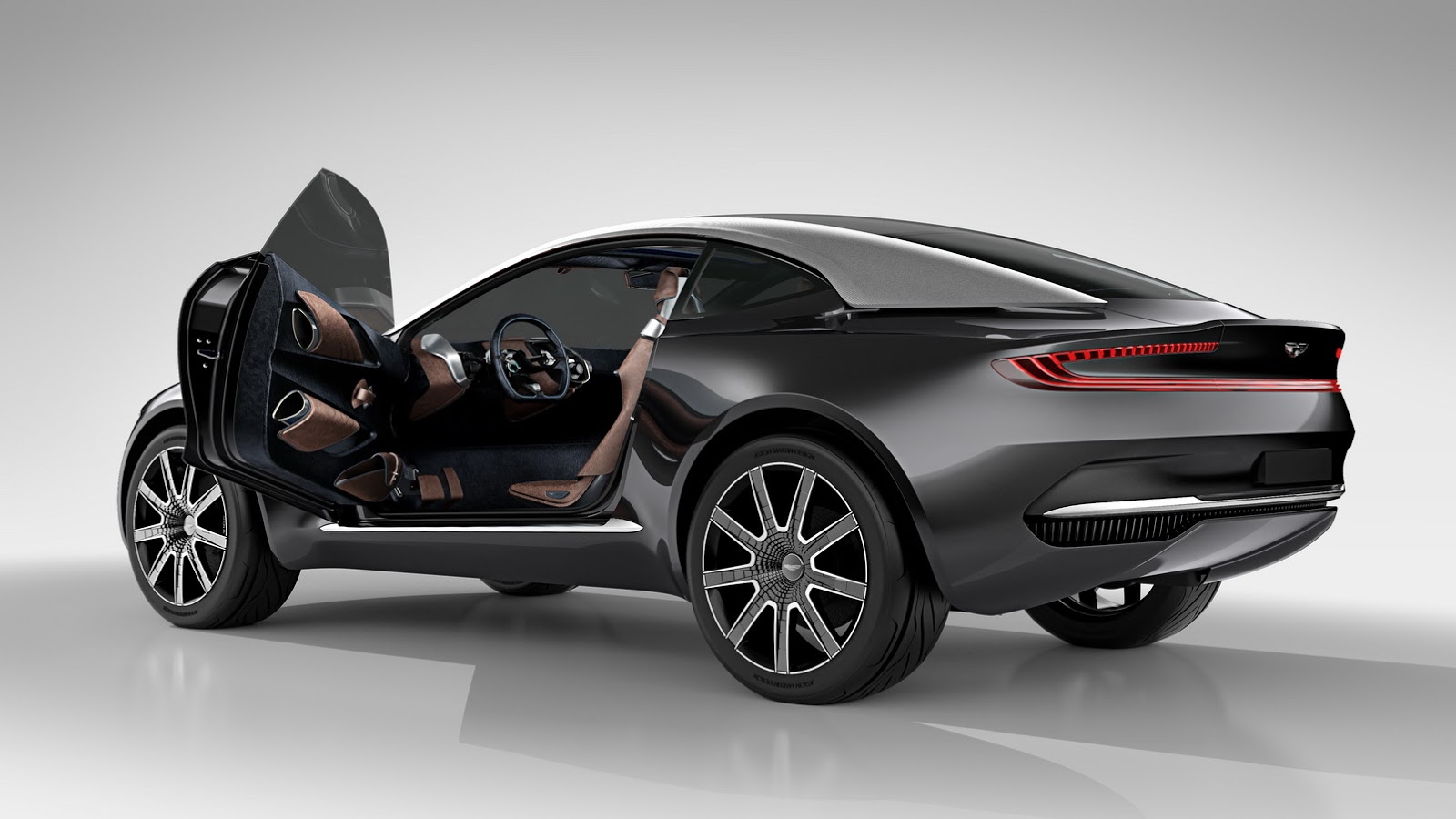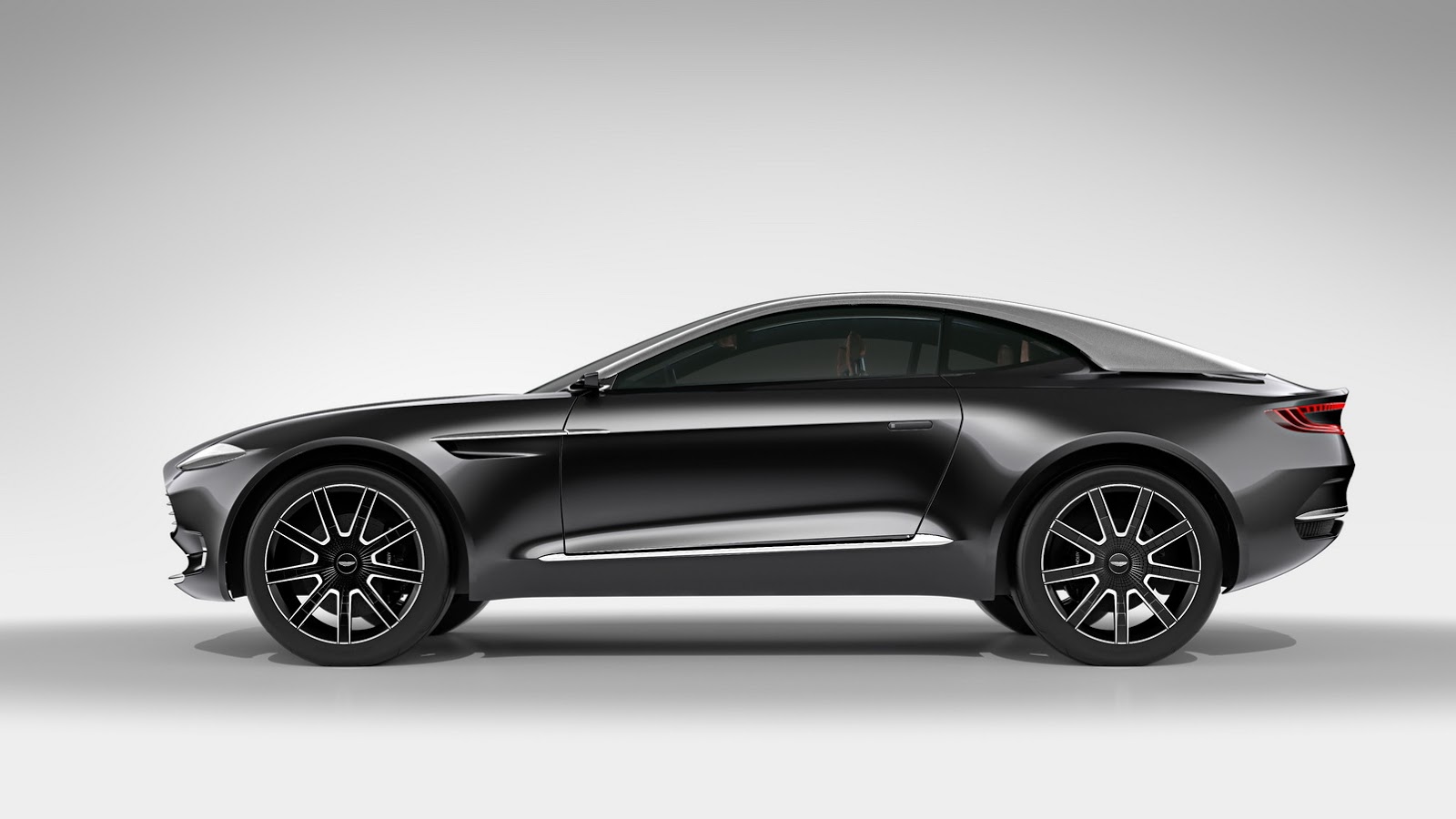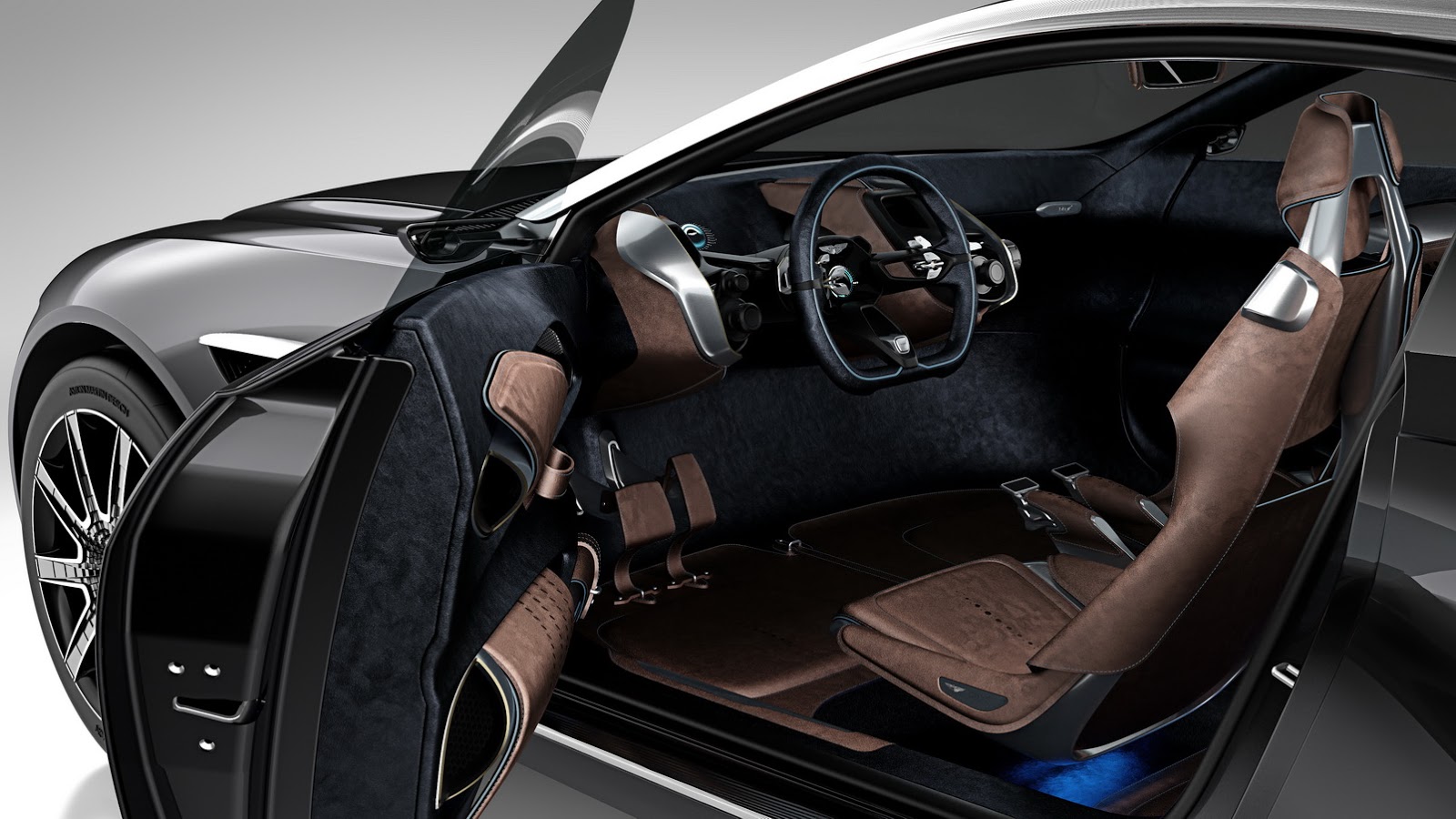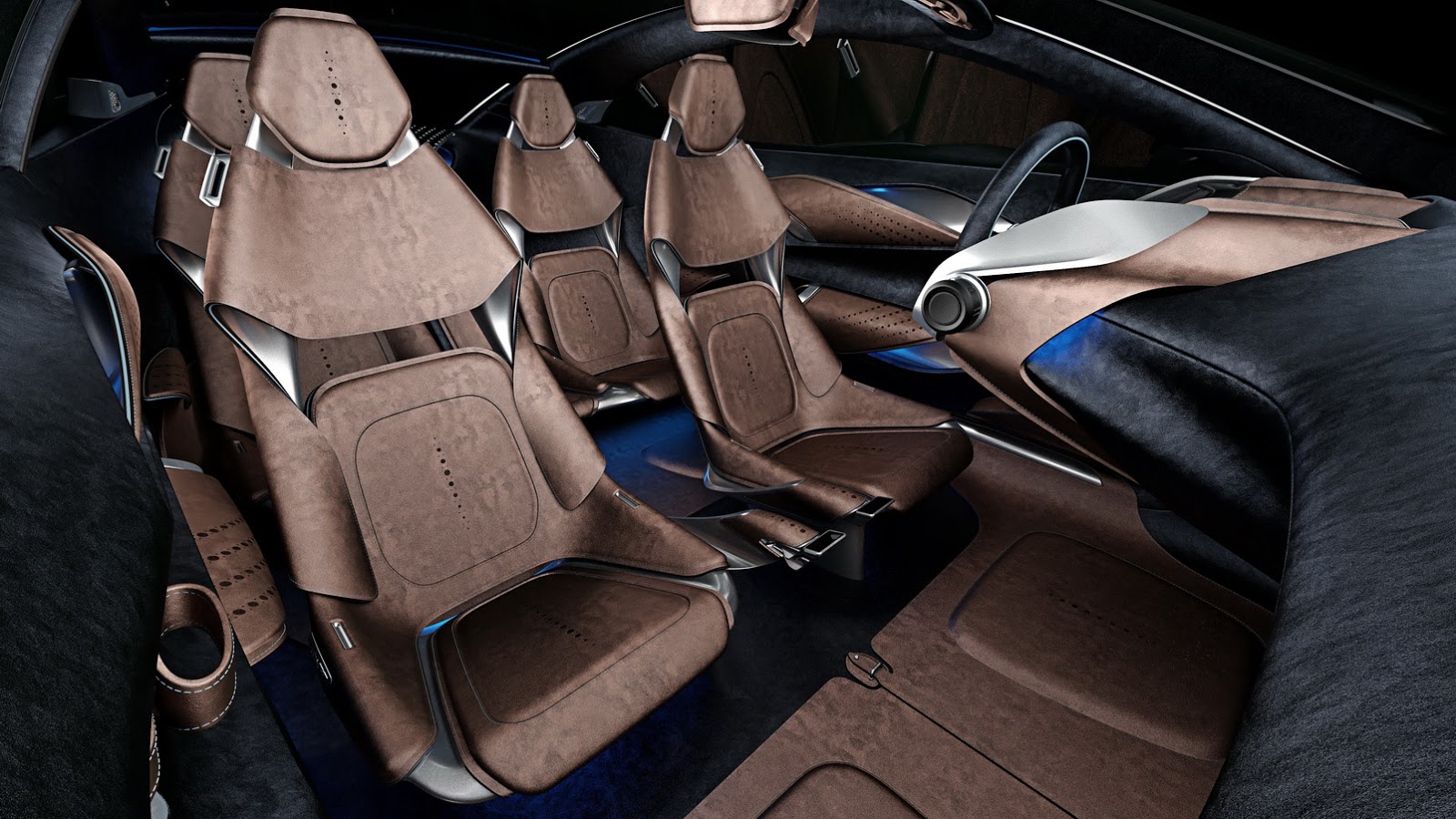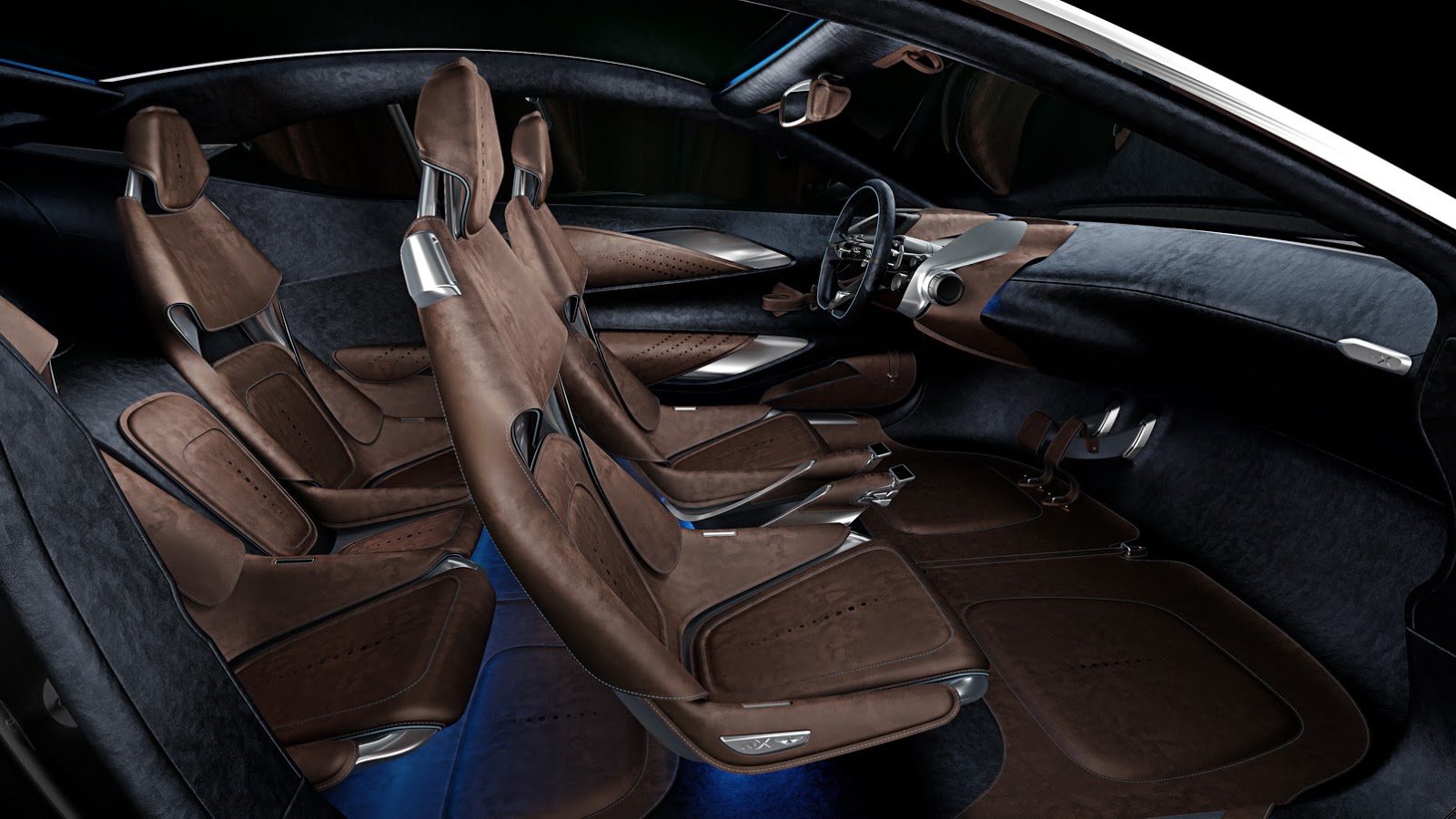Officially, the Porsche Mission X electric hypercar revealed earlier this week is just a concept. But then that’s what Porsche said about the Carrera GT concept when it unveiled that in Paris in 2000.
And it’s also what Porsche said about the 918 Spyder at Geneva in March 2010. In both cases, production cars were in showroom within four years. Make no mistake, an electric Porsche supercar is coming, and it’ll be here before the end of this decade.
But maybe you don’t want to wait. And maybe you don’t have to. Because before the Porsche so much as turns a wheel there will already be several other rapid, and rapid-charging electric exotics for rich EV fans to choose from. Some are even available right now. Which would you choose?
Porsche Mission X
Related: New Porsche Mission X Is An Electric Hypercar Concept Charging For ’Ring Record Glory
Before we get to the rivals, let’s quickly recap the Mission X and remind ourselves why it might be worth waiting for. In terms of technical details, we don’t have a lot to go on other than it will have a power to weight ratio of one hp for every 2.2 lbs (1 PS per kg) and aims to be the fastest street-legal production car around the Nurburgring, which would mean beating the 6:35.18 time set by the Mercedes-AMG One last year.
Some reports say the Mission X has around 1,500 hp (1,521 PS), which would give it a curb weight of 3,353 lbs (1,521 kg), making it much less powerful than existing electric hypercars like the 1,887 hp (1,914 PS) Rimac Nevera, but 25-30 percent lighter. Porsche did reveal that the Mission X has its battery pack located behind the seats and that its 900-volt electrical system allows it to charge at around twice the speed of the already fast-charging 800-volt Porsche Taycan.
What about the design? We think it’s a great blend of Le Mans racer and road-going supercar shapes and details, and the butterfly doors make getting in and out far more of an experience than climbing into a 918. Another cool feature is the illuminated Porsche lettering on the back. The ‘E’ at the end of the maker’s name flashes when the car is charging.
At this stage we can only speculate about cost and on-sale dates, but our gut is telling us to expect to see a production version (Porsche X?) leaving Porsche’s Weissach skunkworks in 2027 with a $2m price tag.
Rimac Nevera
Rimac’s rise to fame has been almost as rapid as the cars it makes. Founded 14 years ago by a gifted young engineer who went to create his first supercar at the tender age of 23, Rimac recently merged with Bugatti and, perhaps significantly for the Mission X’s development, is part owned by Porsche.
The company’s current hypercar is the $2.4 million Nevera, which is powered by a quartet of electric motors producing 1,888 hp (1914 PS) and 1,741 lbs (2,360 Nm) ft of torque. Unsurprisingly, given those numbers, it’s ludicrously rapid, taking 1.85 seconds to reach 60 mph (1.97 to 100 km/h), demolishing a quarter mile in 8.58 seconds at 167.51 mph (269.58 km/h), and hitting 186 mph (300 km/h) from rest in 9.3 seconds.
Lotus Evija
We’ve all seen what the Rimac Nevera can do with 1,888 hp, but Lotus’s first ever hypercar is even more powerful thanks to its absurd 1,972 hp (2,000 PS) EV powertrain, and should weigh hundreds of pounds less.
It’ll still be heavy for a Lotus, at around 3,700 lbs (1,680 kg), but that looks positively Elise-like next to the 5,071 lbs (2,300 kg) on the Rimac’s spec sheet, and don’t bet against the chassis gurus at Hethel making it feel half its size. Lotus says the $2.8 million Evija will keep up with a Bugatti in a straight line, top 200 mph (322 kmh), and offer 215 miles (346 km) of WLTP driving range.
Tesla Roadster
Originally revealed in 2017 with the promise that it would be on sale by 2020, the mythical Tesla Roadster is now expected in 2024. But while the roadster might be slow getting here, it definitely won’t be slow when it does finally arrive. Expect performance in the order of 1.9 seconds to 60 mph, and possibly even better, courtesy of a triple-motor drivetrain. And all that for a $250,000 price that will make it one-tenth as expensive of a similarly performing Rimac Nevera.
Pininfarina Battista
Pininfarina helped create some of the world’s most famous supercars over the years, but now it has created one if its own, albeit with substantial assistance from Rimac, whose Nevera provides the basic chassis and running gear.
Four electric motors supply a combined 1,874 hp (1,900 PS) and 1,696 lbs-ft (2,300 Nm) of torque, which helped the $2.2 million Battista record a 1.79-second zero to 60 mph time, 1.86 seconds to 62 mph (100 kmh) and zero to 186 mph (300 kmh) in 10.5 seconds. Just 150 will be built, including 5 Anniversario versions featuring a more aggressive aero package, lighter wheels and unique colors.
Aspark Owl
Related: World Record-Setting Aspark Owl Electric Hypercar Blitzes A Quarter Mile At 198 MPH
We’re not sure which is worse, the name or the styling, but we don’t suppose you’ll care about either of those things when you unleash all 1,984 hp (2012 PS) and 1,475 lbs ft (200 Nm) of torque in this carbon-bodied Japanese hypercar. Aspark recently set a Guinness World Record for the fastest average speed over a quarter mile (198.12 mph / 318.85 km/h) and claims the Owl should be capable of zero to 60 mph in the 1.6-second range, though the best it’s achieved so far is 1.72 seconds. Only 50 cars will be built, each costing an eye-watering $3.45 million (€2.9 m).
Hyperion XP-1
The Hyperion XP-1 feels like it’s been around forever, though it’s still only at the prototype stage. It’s not only the original styling, including that weird ribbon around the midriff and a rear end that looks like a constipated dog trying to squeeze out a couple of pebbles, that makes the XP-1 different, but what’s under the skin. The Californian hypercar uses electricity and four axial-flux motors to turn its wheels, but those volts are produced by a hydrogen fuel cell. Hyperion says the 300 planned production cars will make more than 2,000 hp (2,028 PS), crack 60 mph in 2.2 seconds and have a top speed of 221 mph (356 km/h).
Deus Vayanne
The Deus Vayanne sounds like an adult movie star, looks about as sexy as a retired librarian and could be the most powerful production road car on the planet if computer simulations of the powertrain setup suggesting more than 2,169 bhp (2,200 PS) and 1,475lb ft (2,000 Nm) of torque turn out to be accurate. The Austrian Vayanne is the result of a collaboration between Italdesign and Williams Advanced Engineering, and the first of 99 units will be on the road by 2025. Each one will have cost its owner around $2.5 million, and should click off 300 miles (483 km) before the 85 kWh battery needs a refill.
Ferrari EV
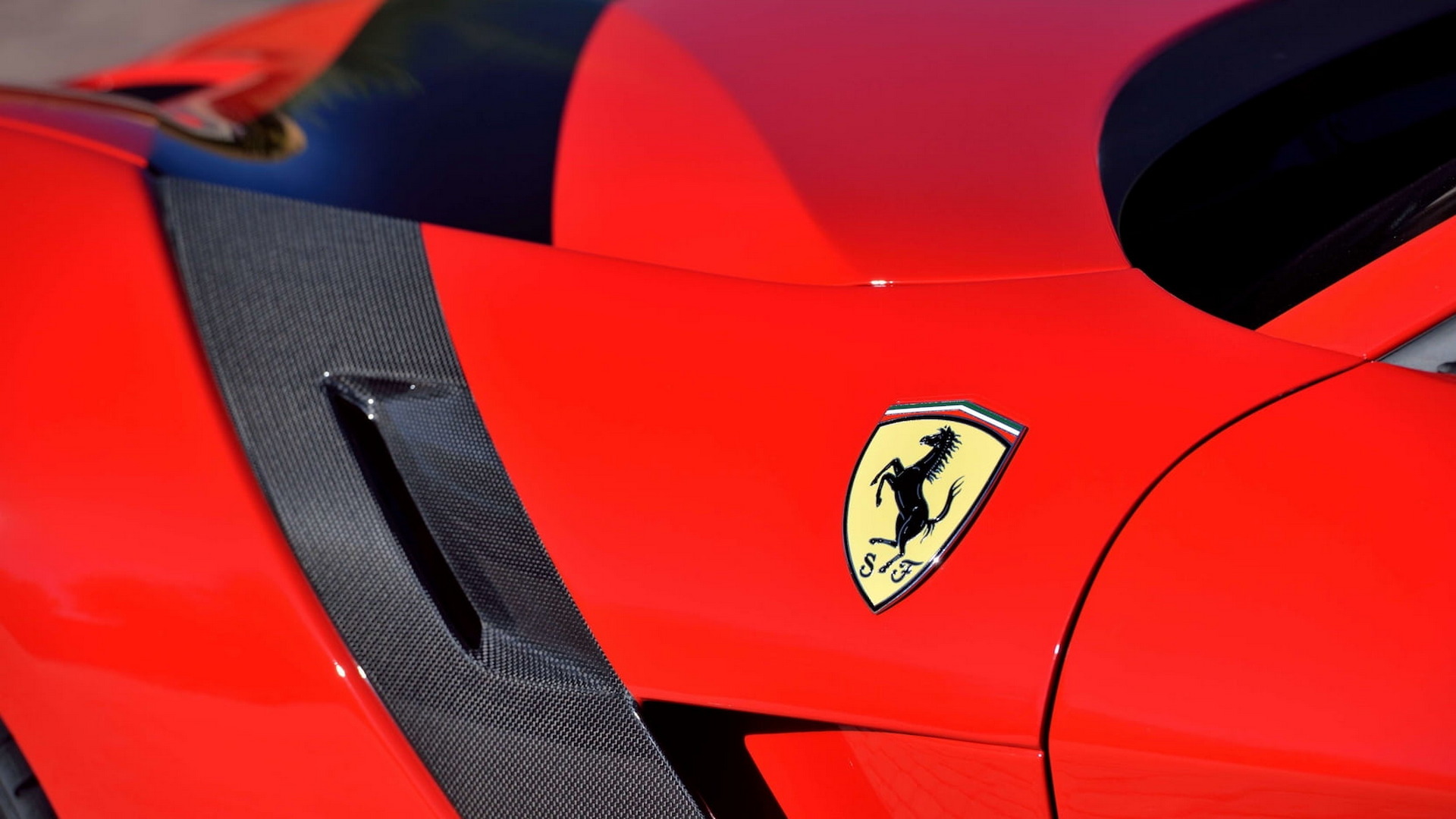
Ferrari is no stranger to electrification. The current SF90, new 296 GTB, and late, great LaFerrari hypercar all feature hybrid power. But the company’s boss has told shareholders and admitted to journalists that come 2025, you’ll also be able to buy a fully electric Ferrari.
Before you early-adopting EV hypercar fans get too excited, it’s worth pointing out that Ferrari hasn’t yet revealed what kind of car its first EV will be. Since the LaFerrari replacement that we’ve seen testing in recent months is likely based on the car Ferrari is racing in the 2023 World Endurance Championship, and will almost certainly feature a V6 hybrid drivetrain, the firm’s first EV might end up being an electric SUV companion to the Purosangue, as reported in Car Magazine.
Lamborghini EV
Like Ferrari, Lamborghini also recently revealed plans to produce its first EV by the middle of the decade. But this almost certainly will take the form of a two-door, four-seat GT car, rather than a range-topping hypercar. Think classic Espada reimagined for the electric age, or a reworked version of the 2015 Asterion concept seen in the images above.
Aston Martin EV
Aston Martin is another big sports car brand preparing to take its first steps into the EV world. The company, whose chairman this month told journalists it was axing plans to make a baby ICE supercar to compete with the Ferrari 296 GTB, will layout its five-year plan to investors on June 27, where it’s expected to confirm the arrival of its first EV in 2026. But we suspect that Aston’s electric debut will be more of a GT or crossover, perhaps along the lines of the 2015 DBX concept seen here, than an out and out sports car.
Which of these exotic EVs get you most juiced up? Leave a comment and let us know.




